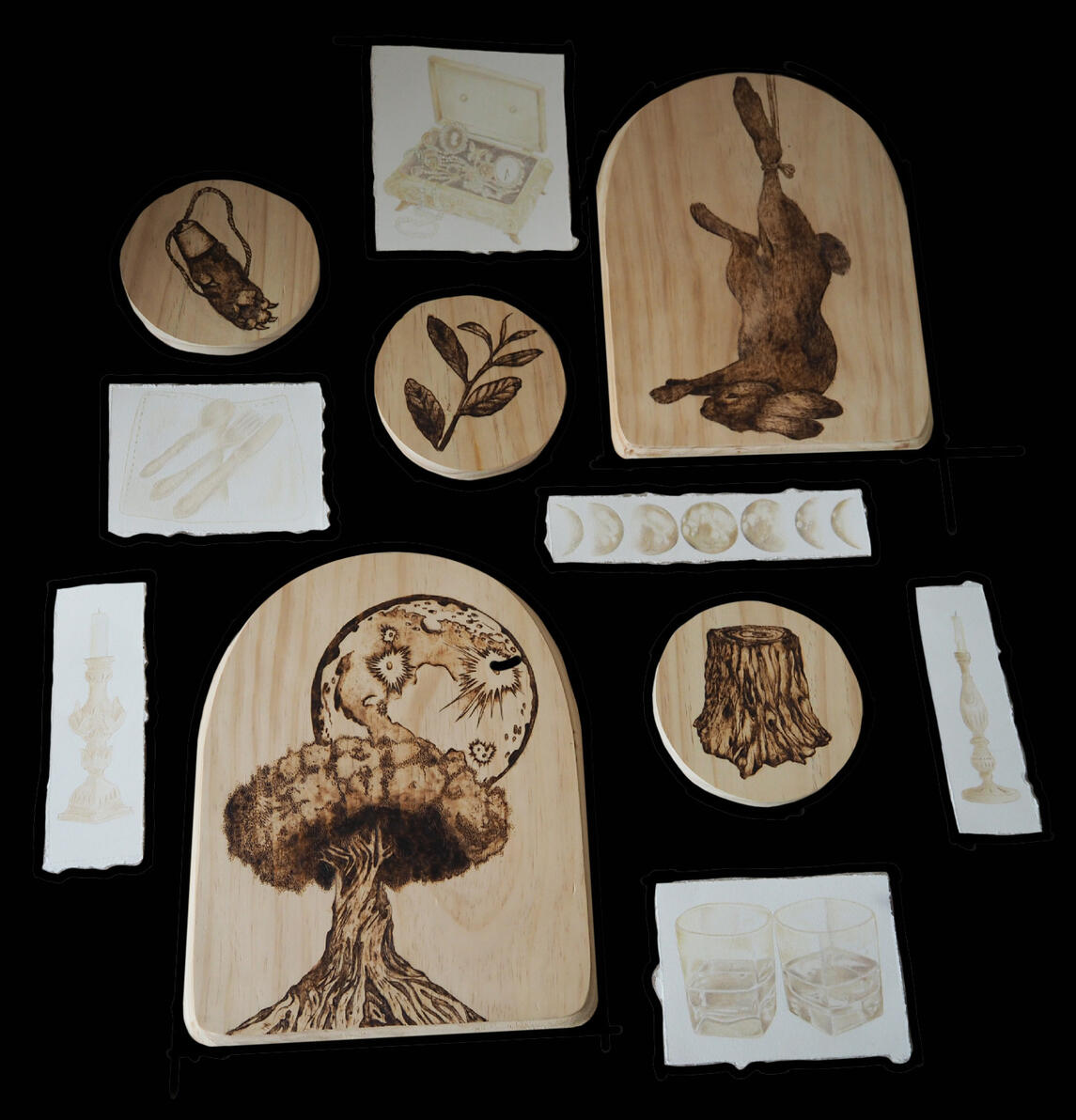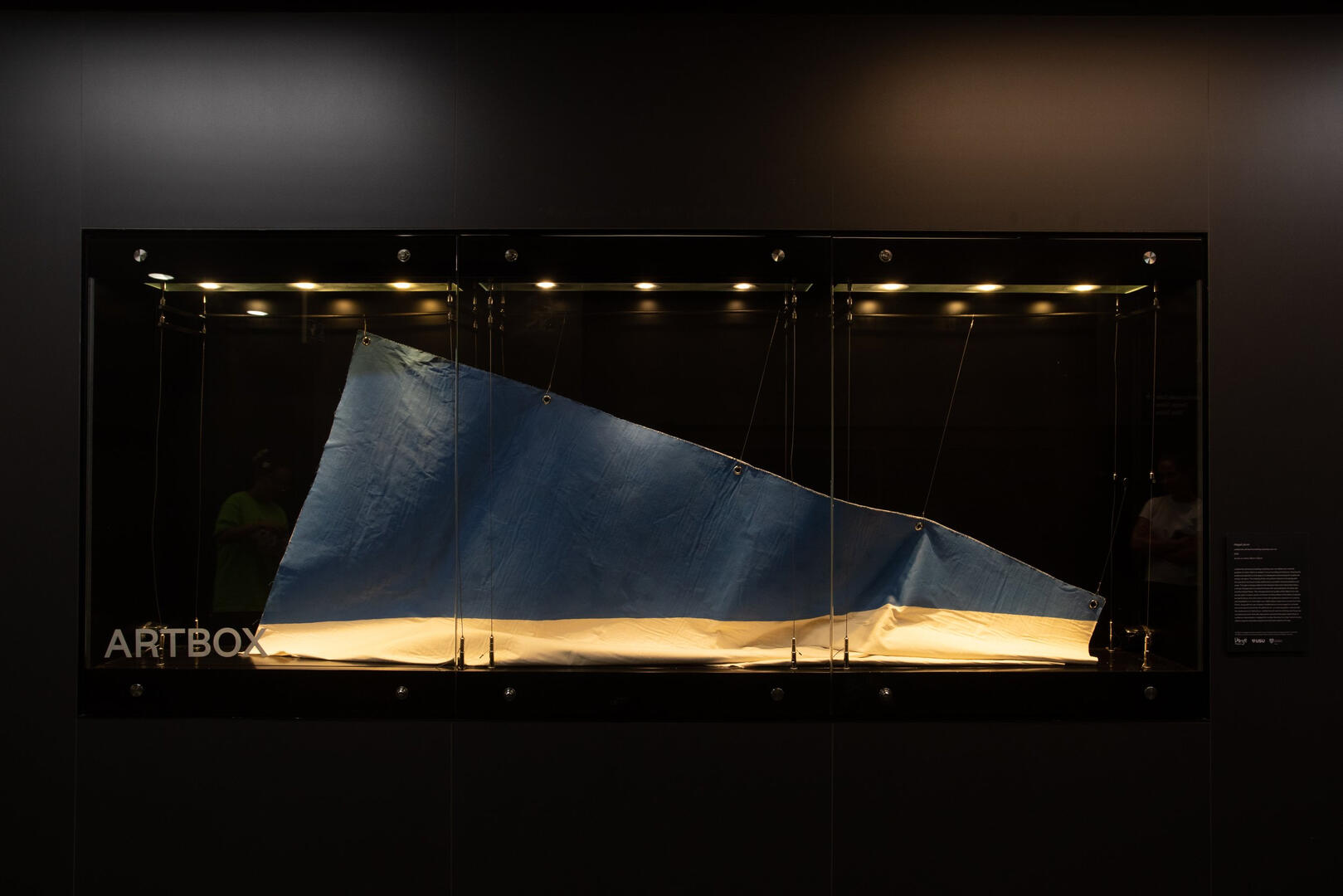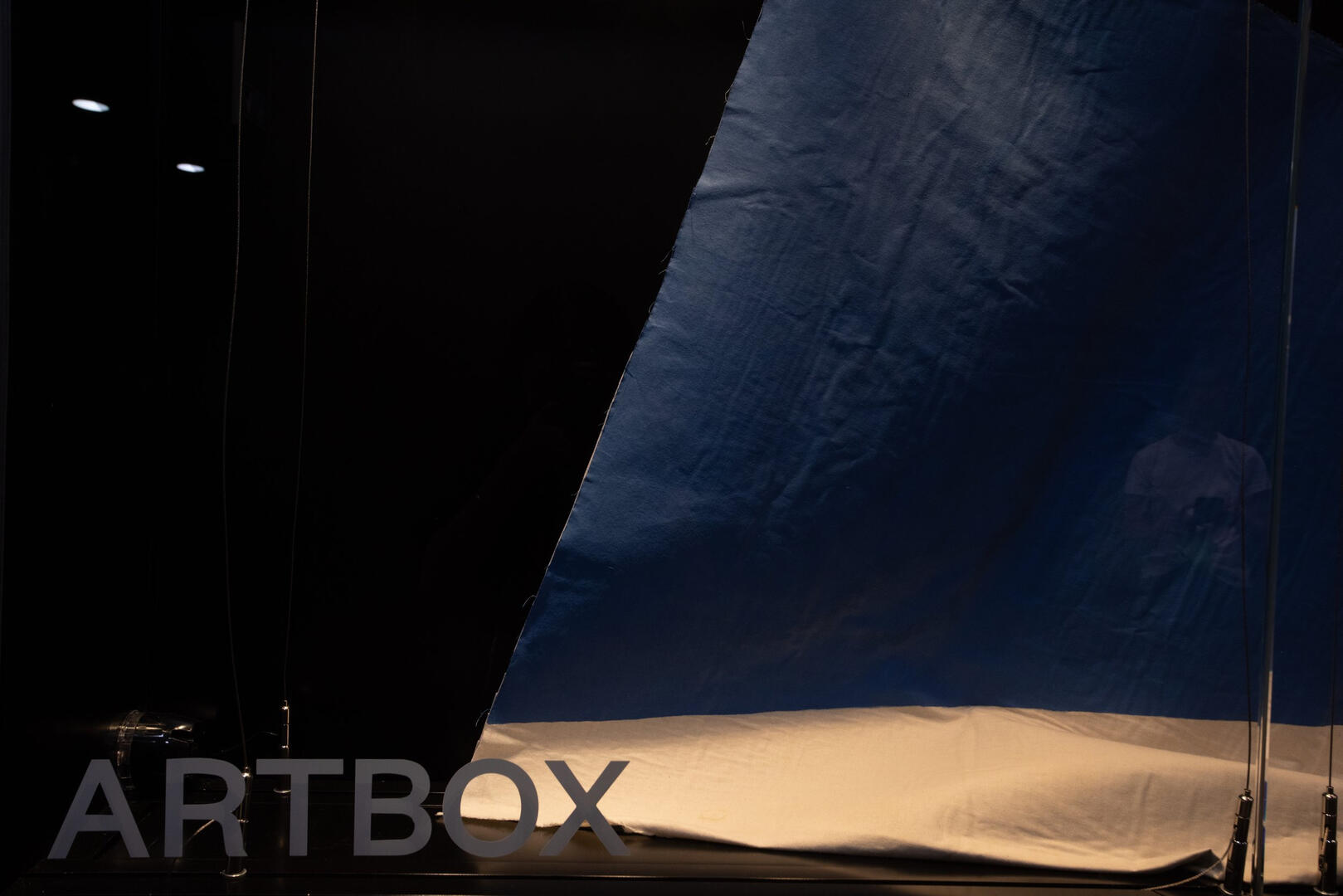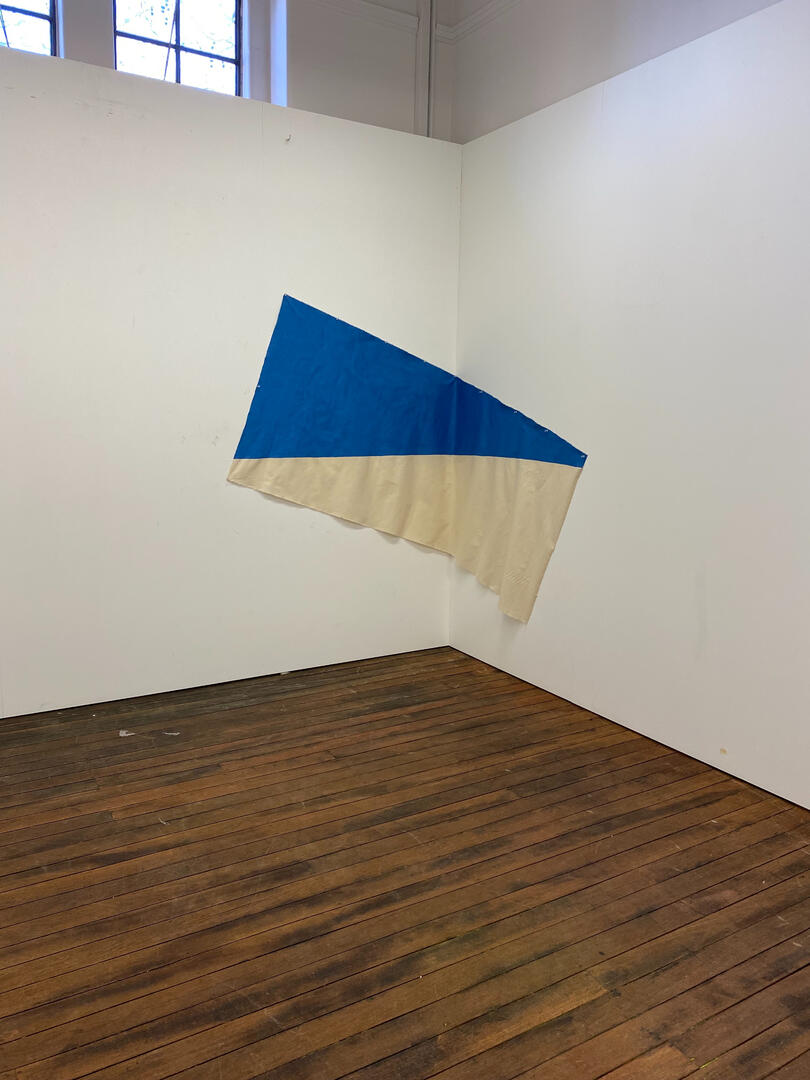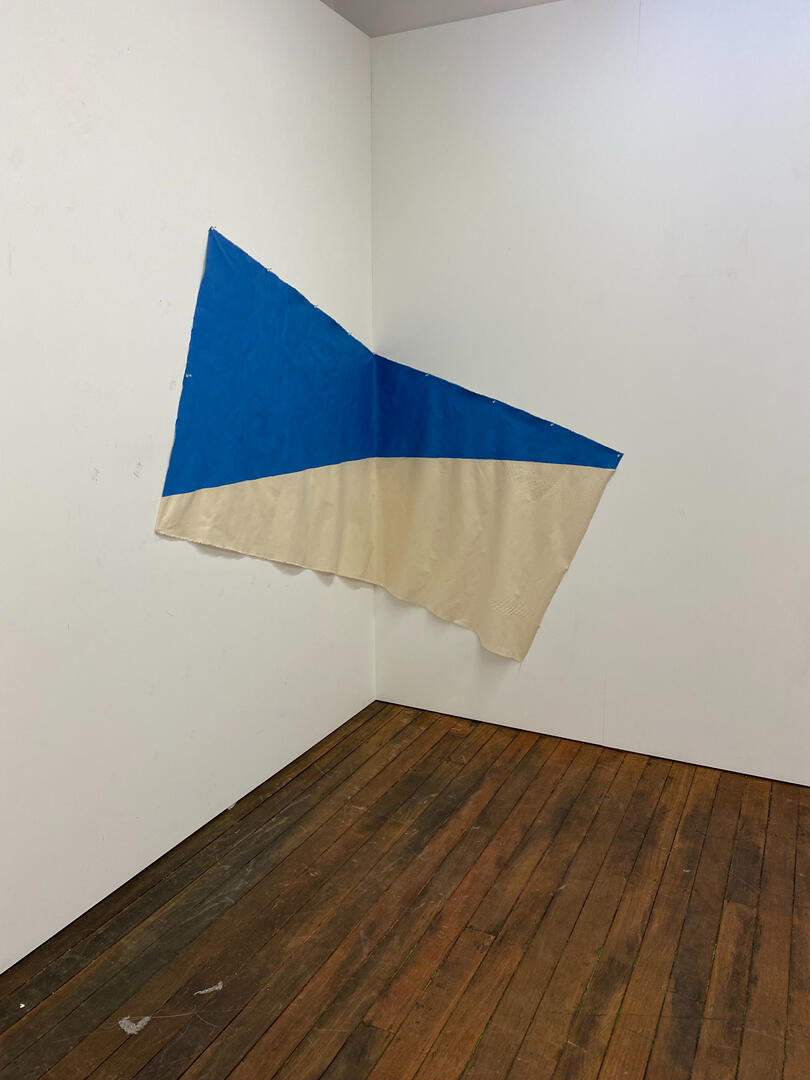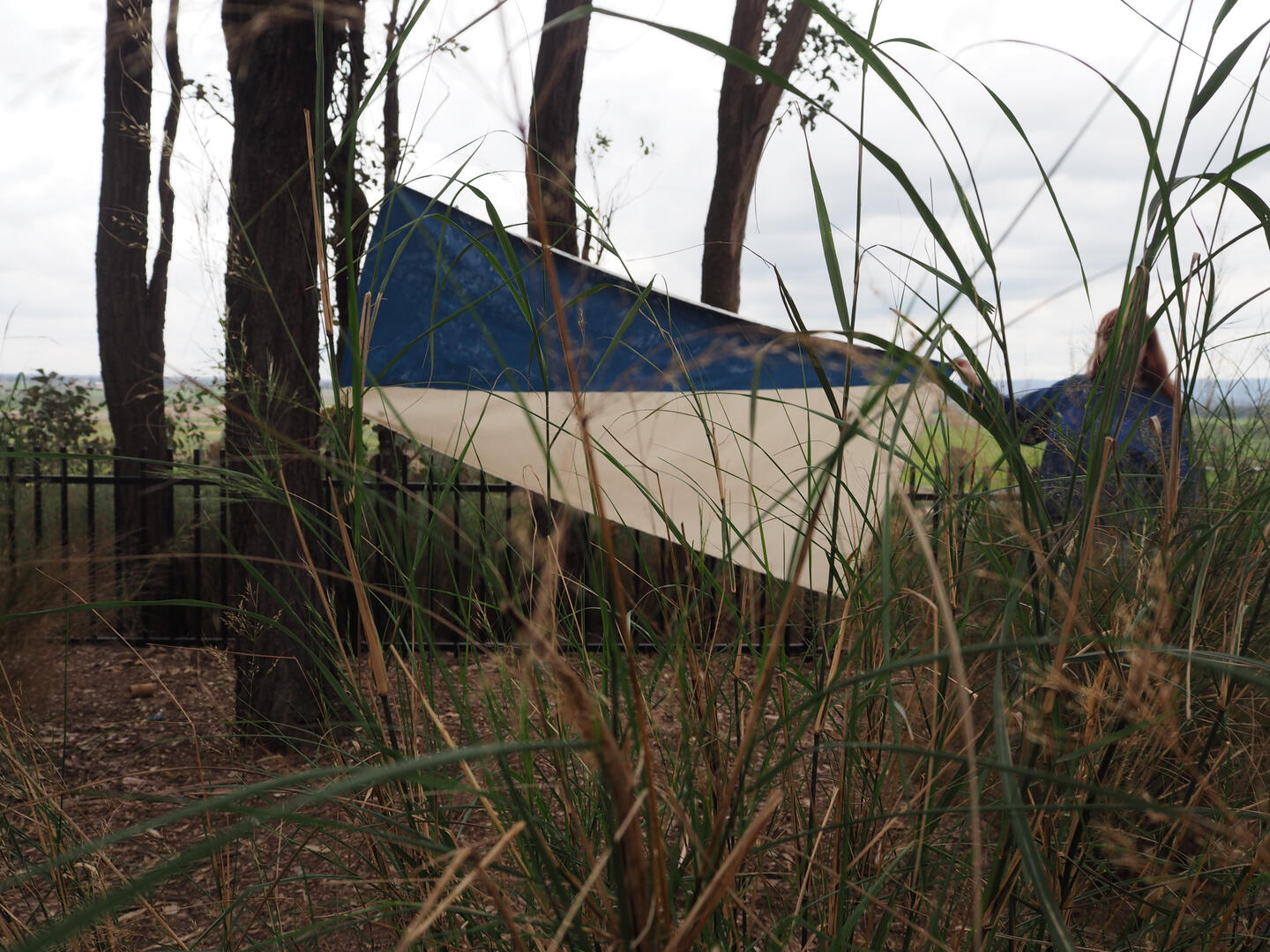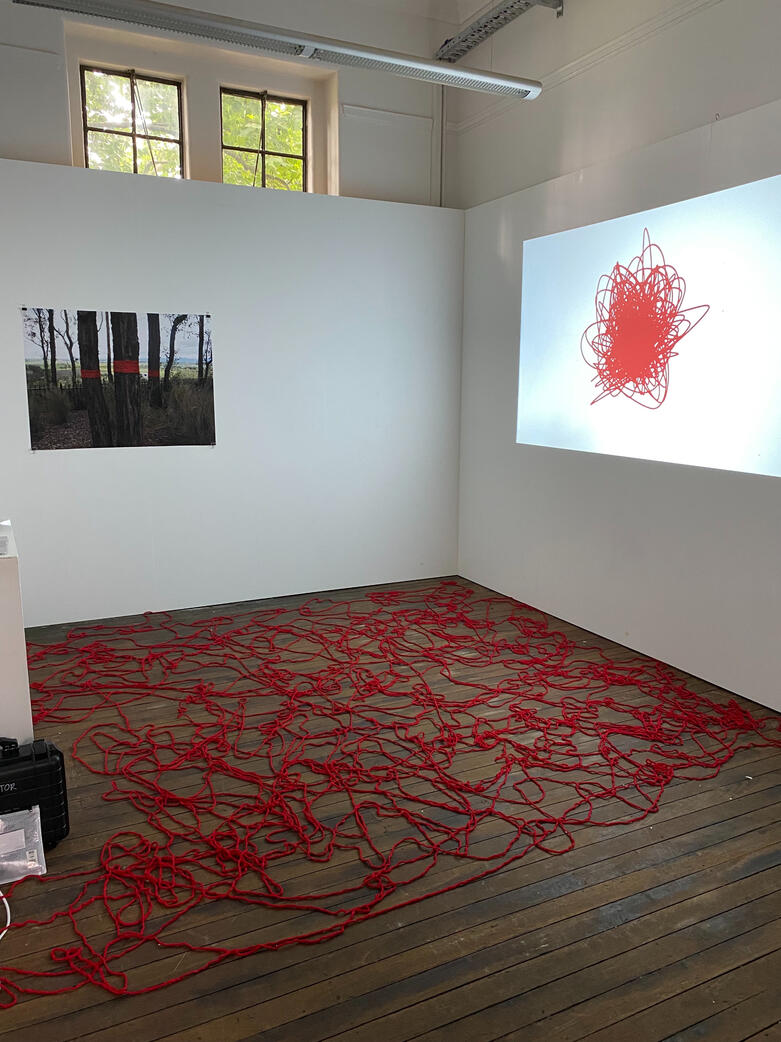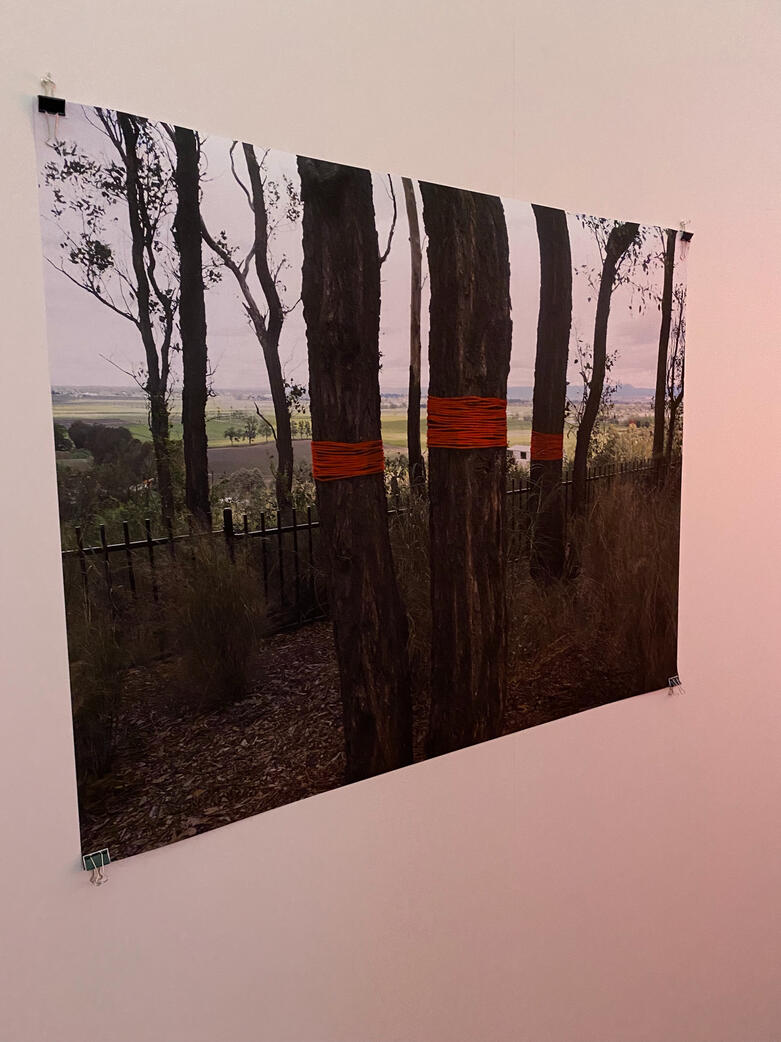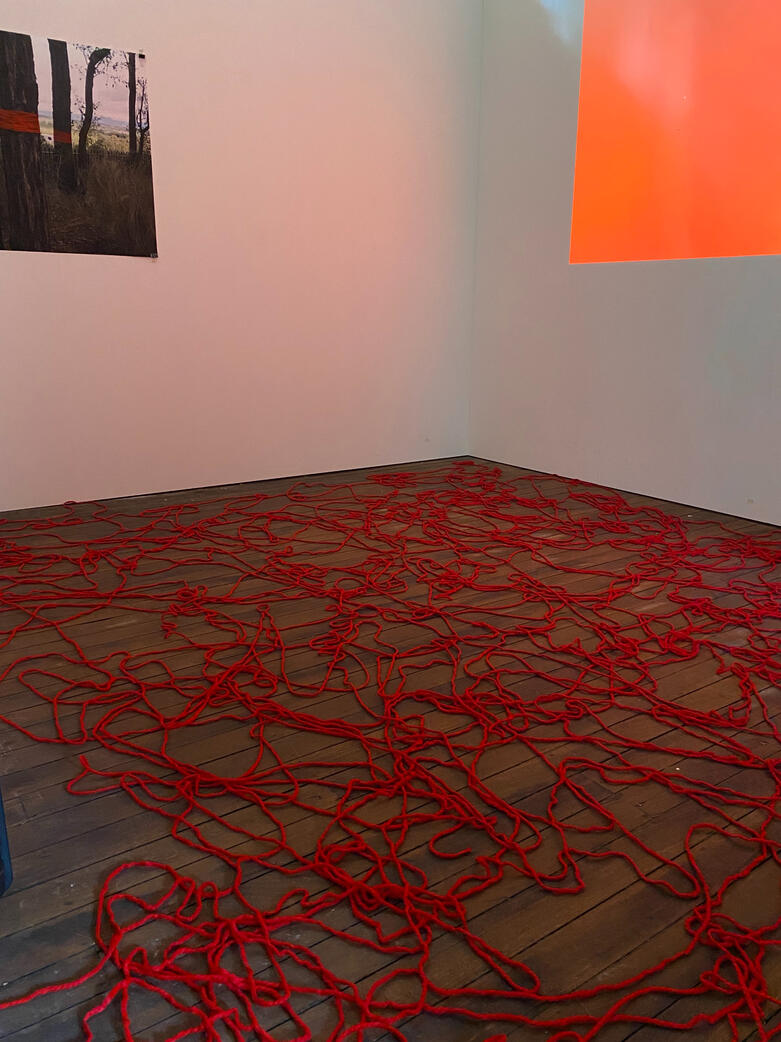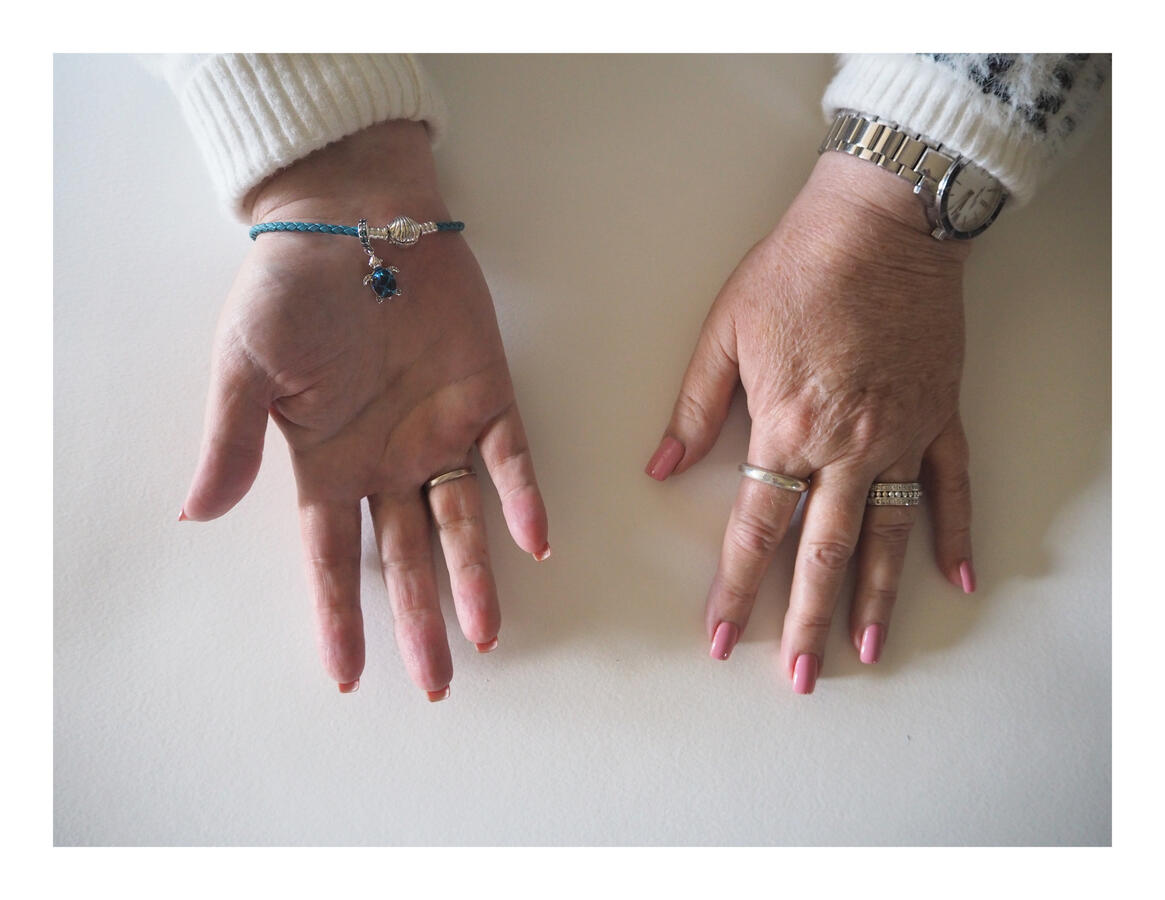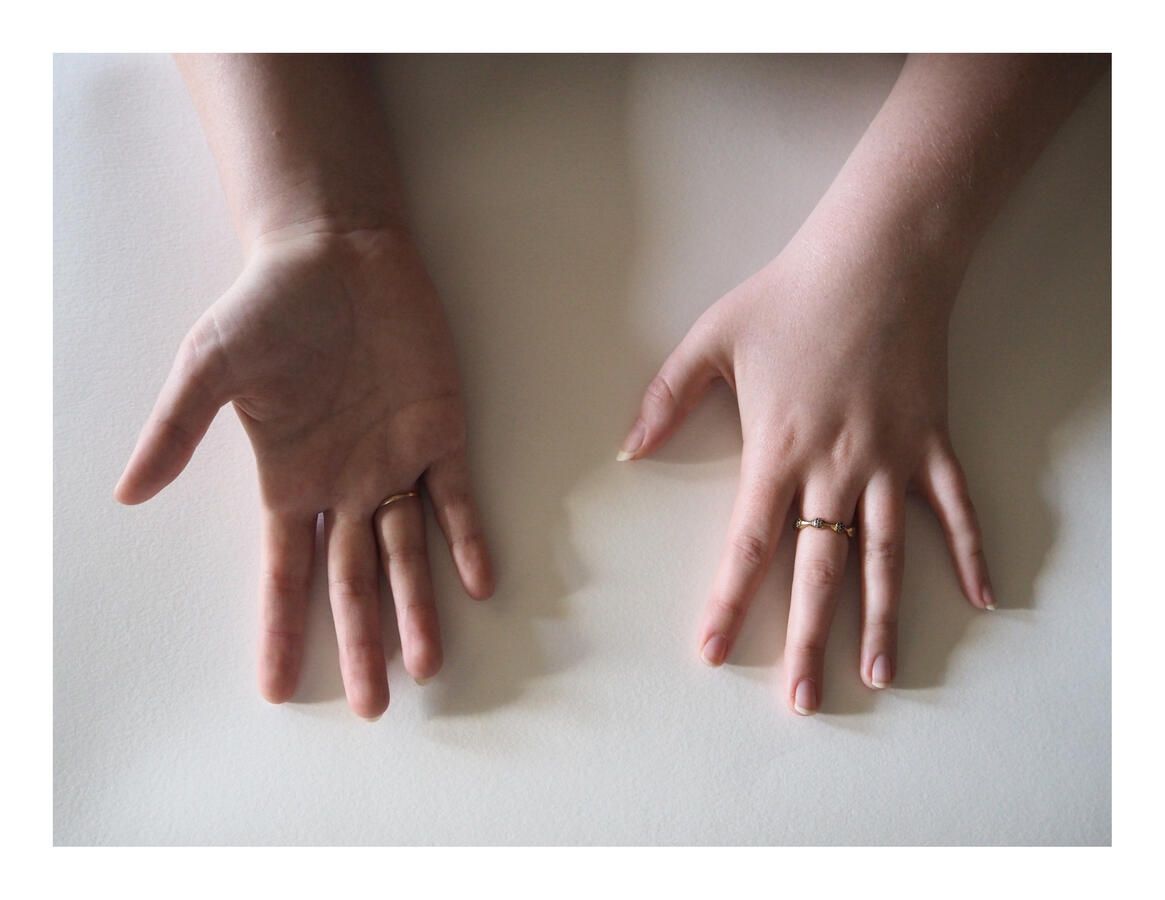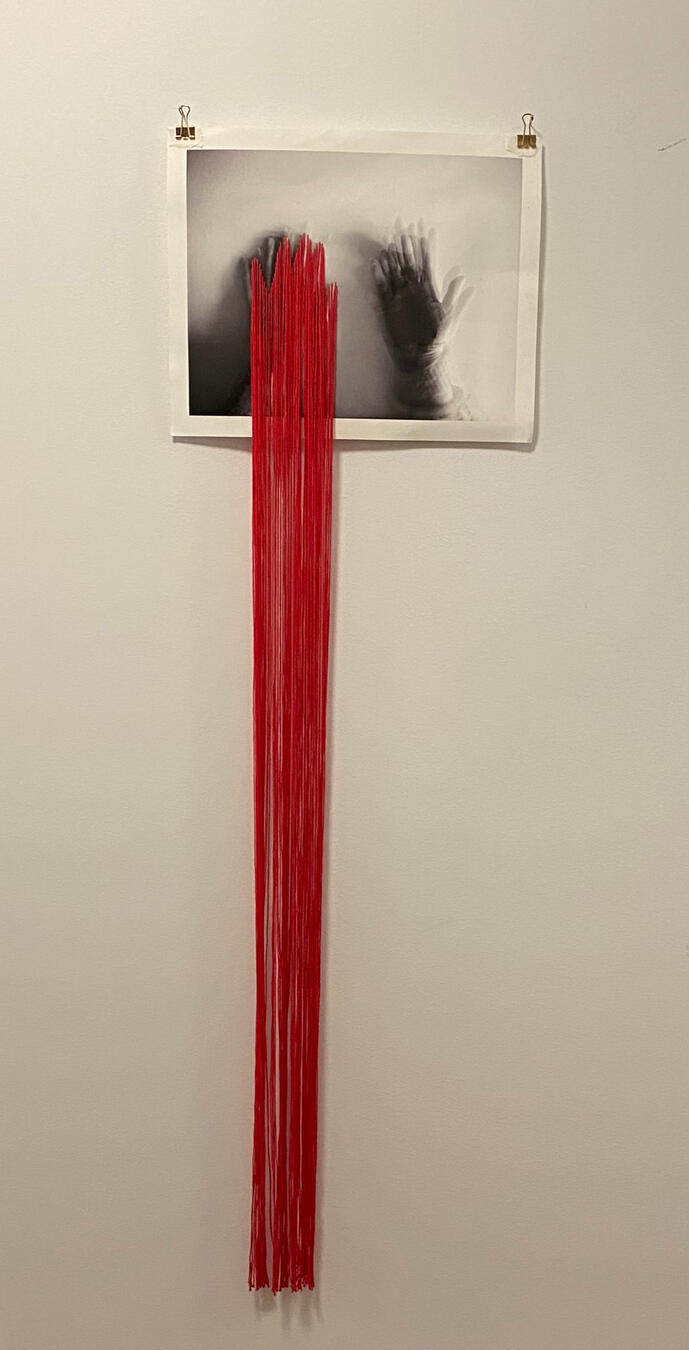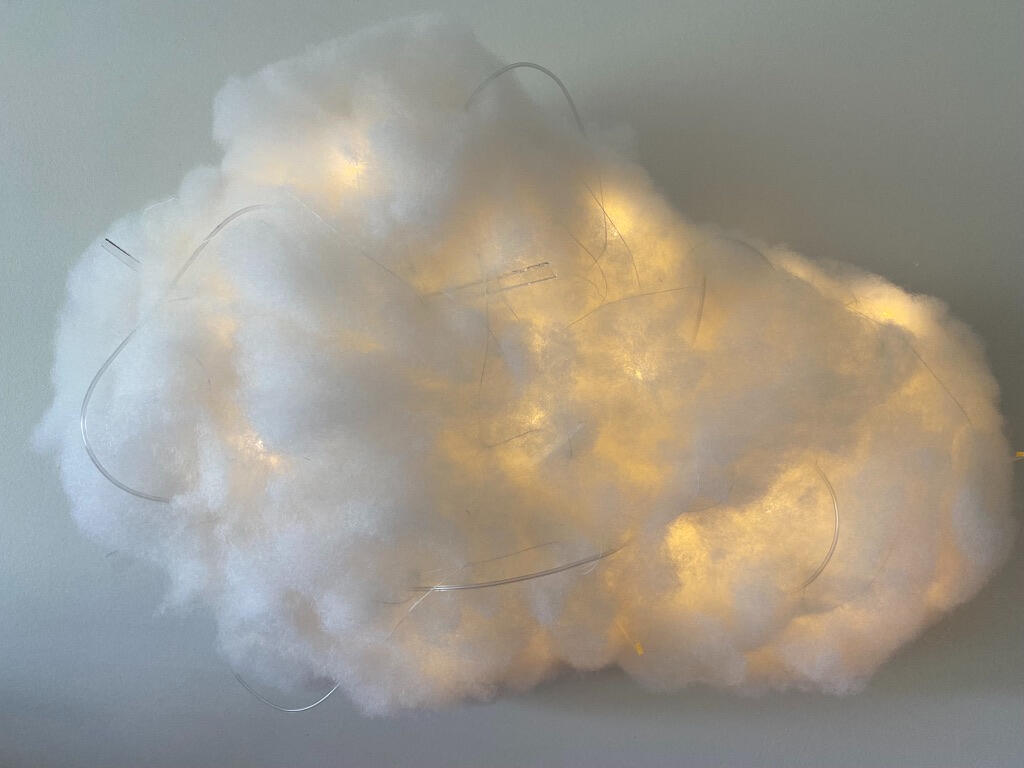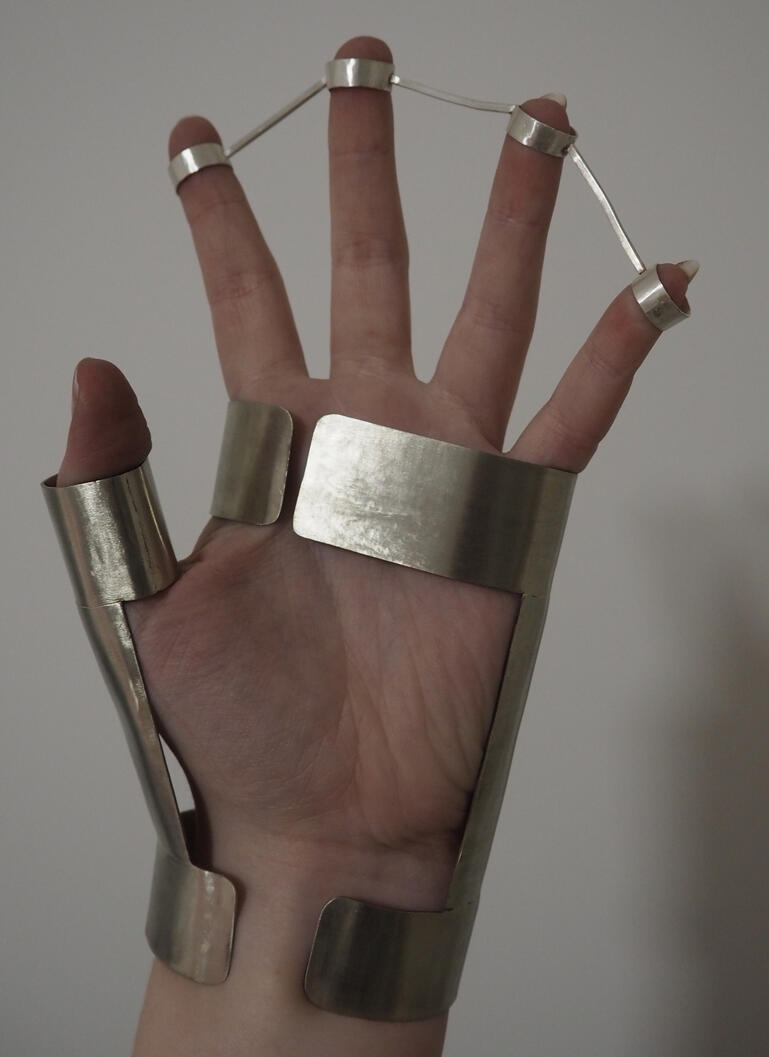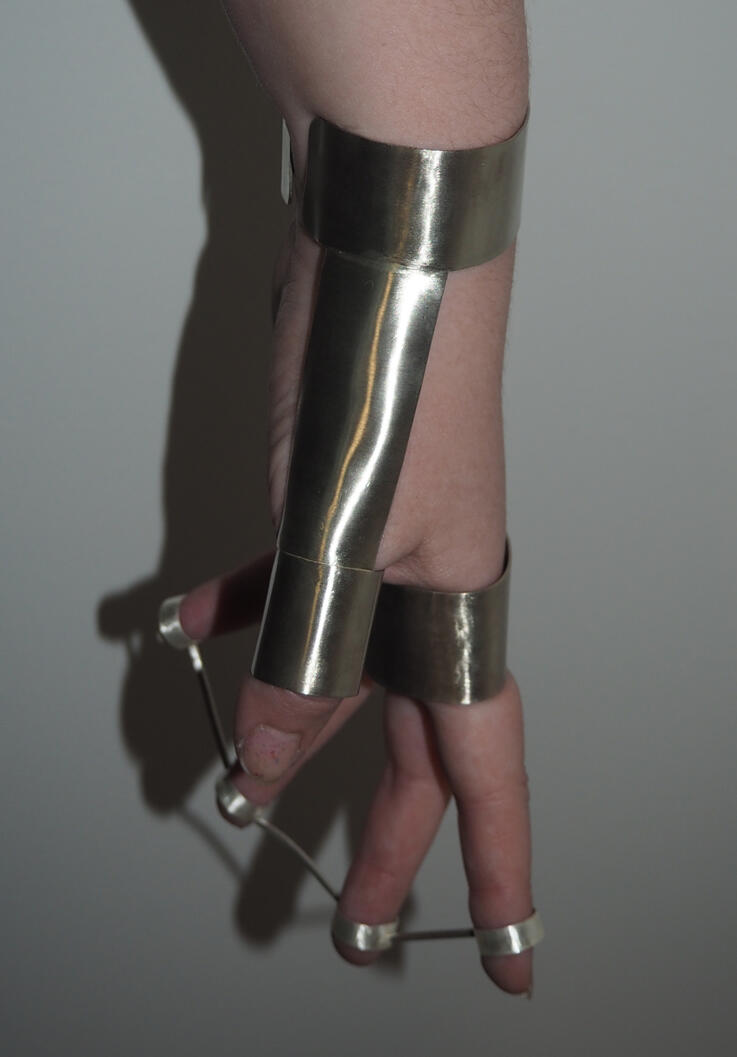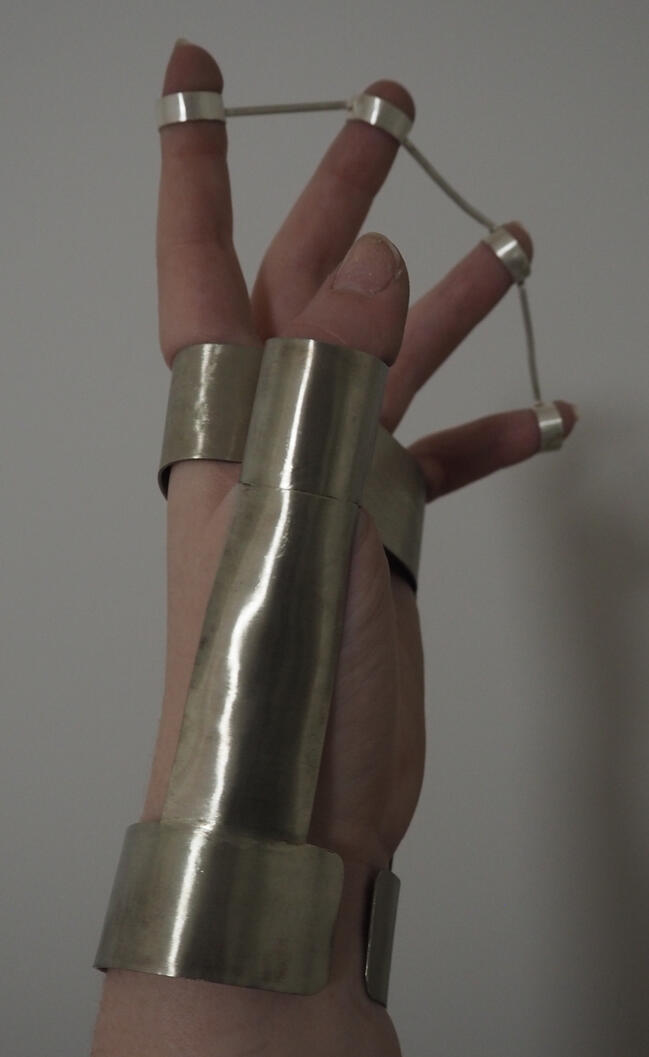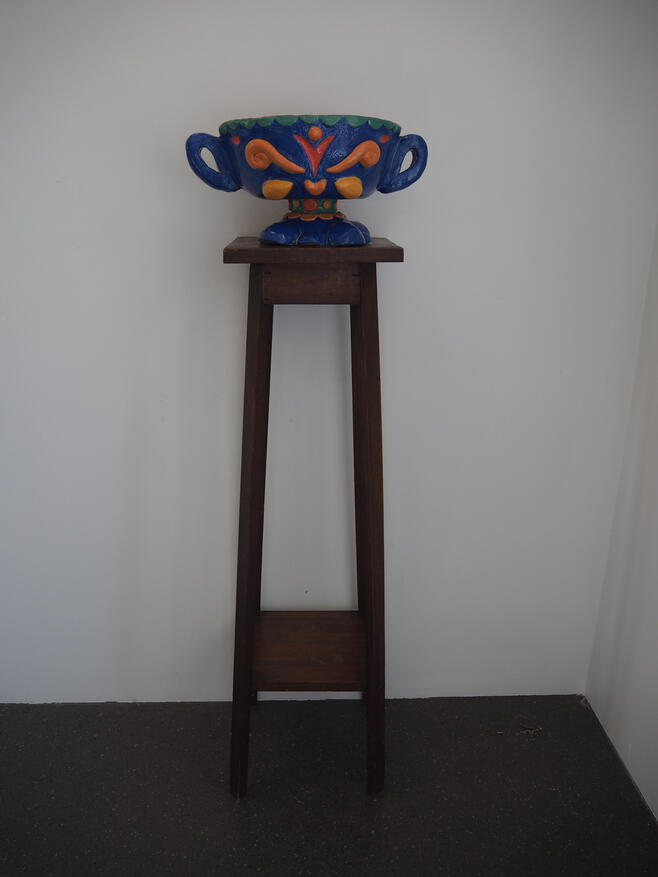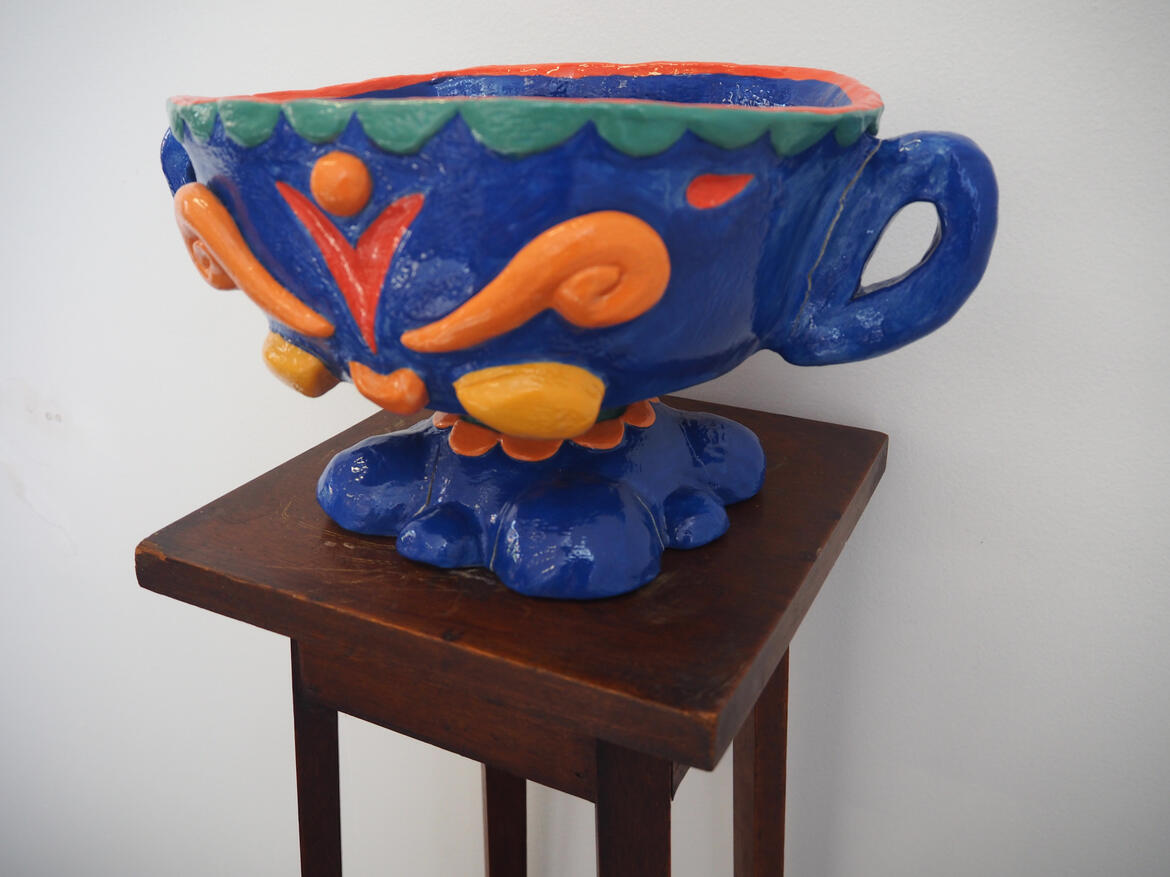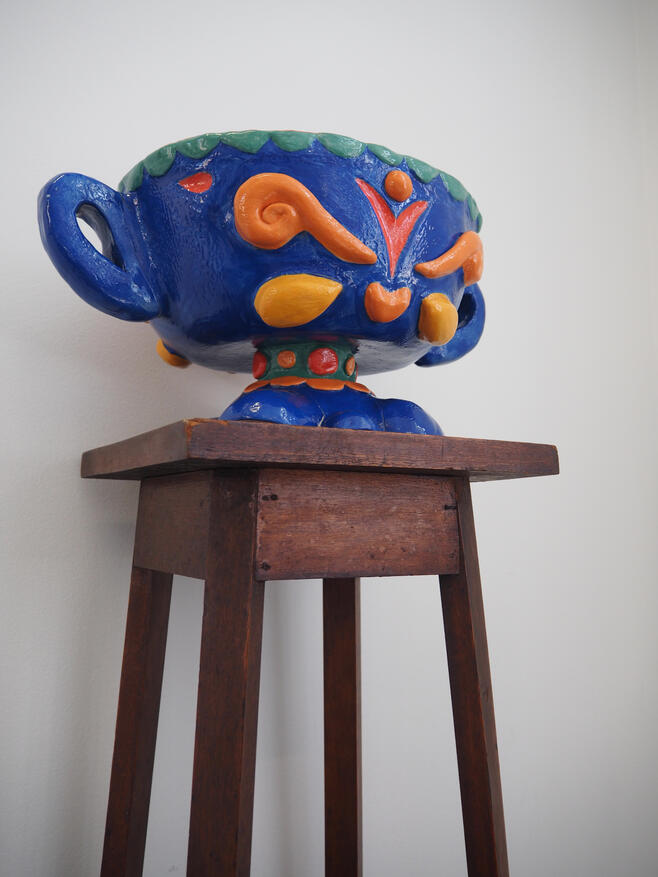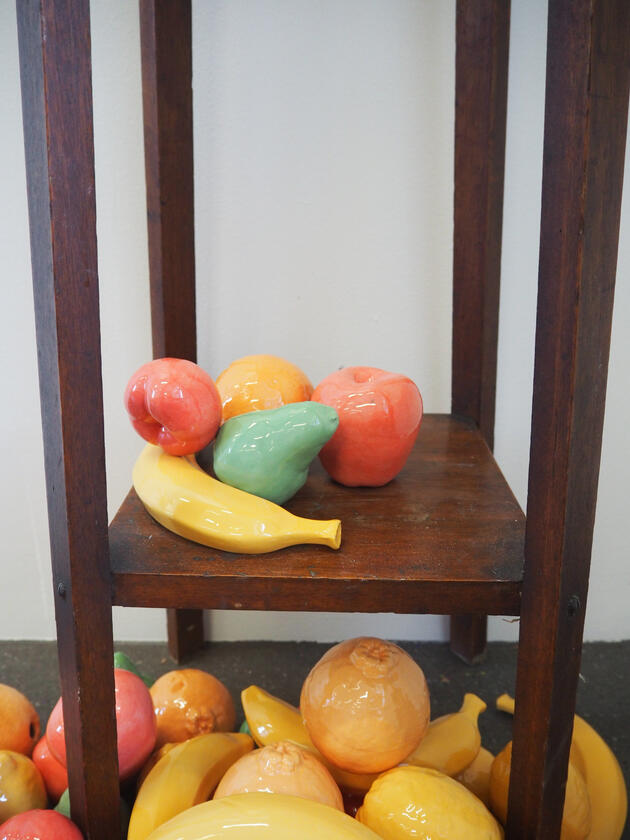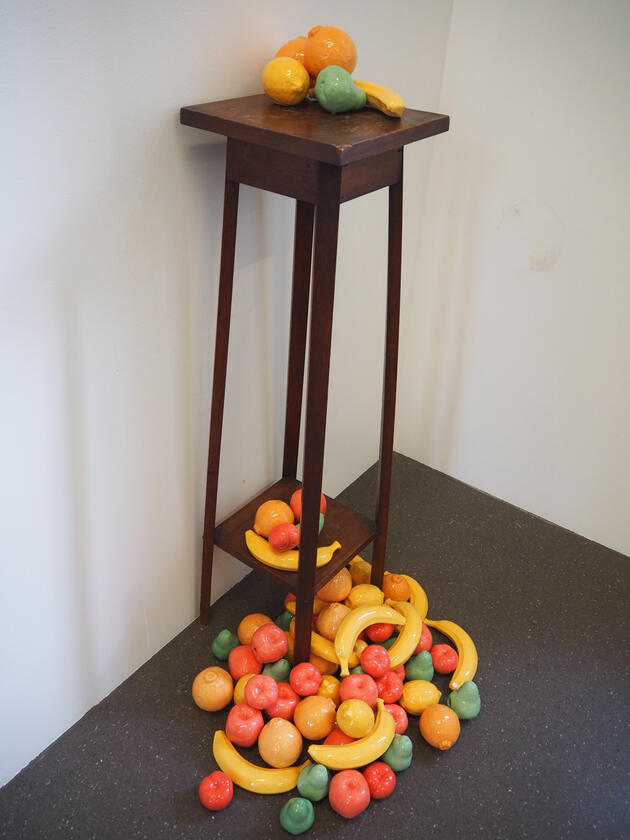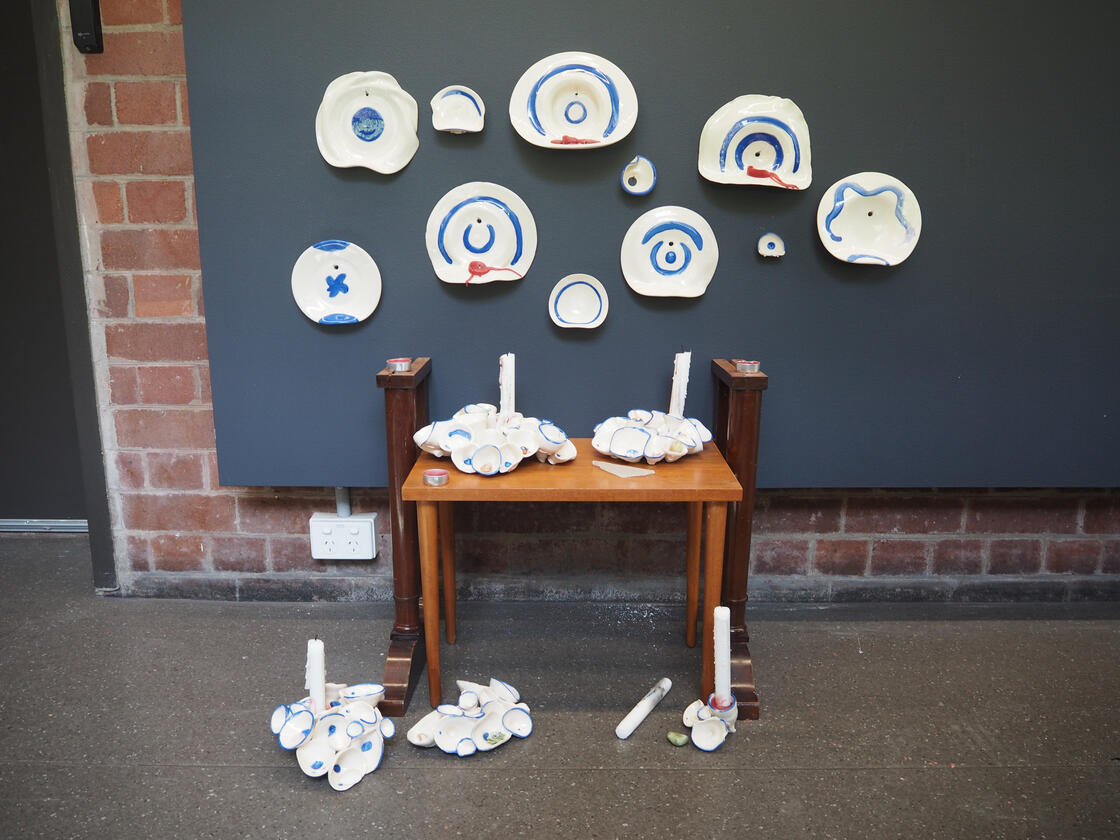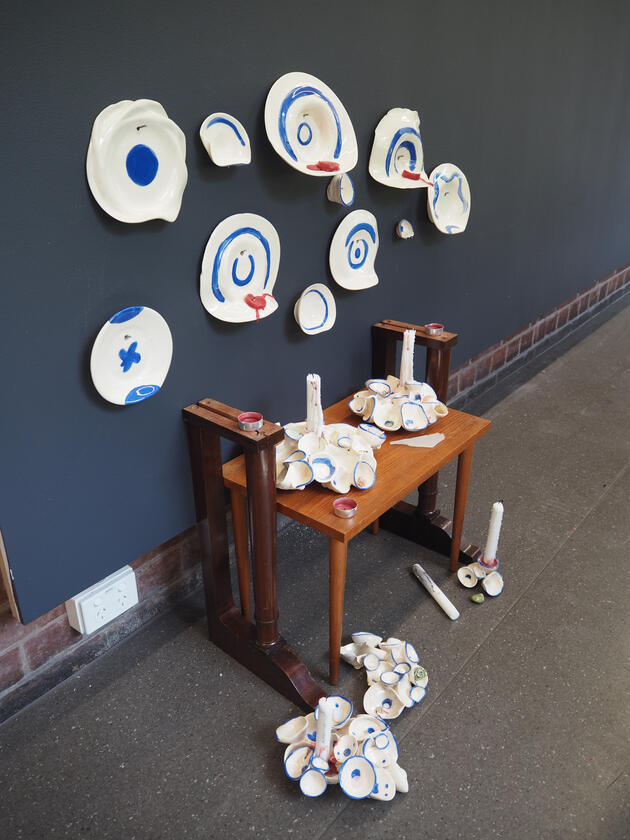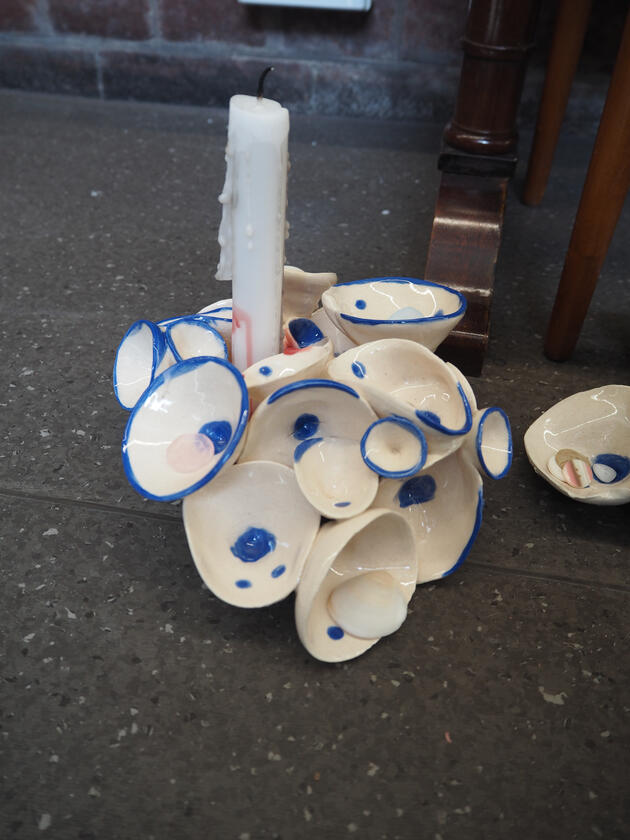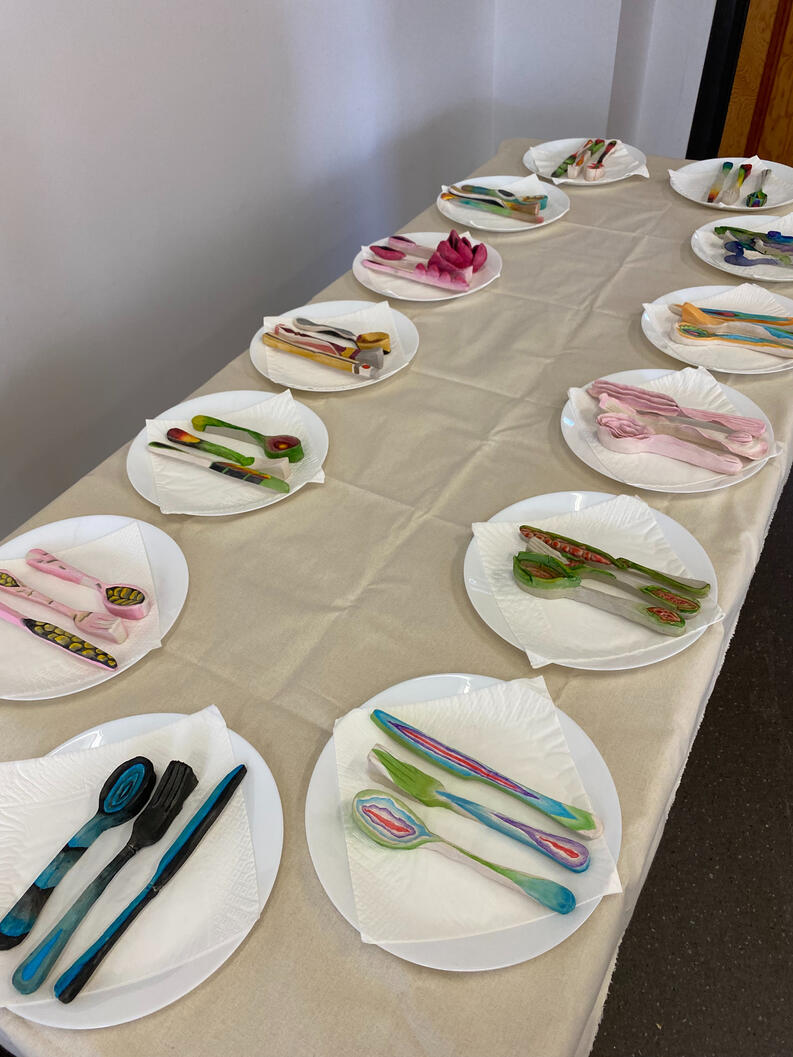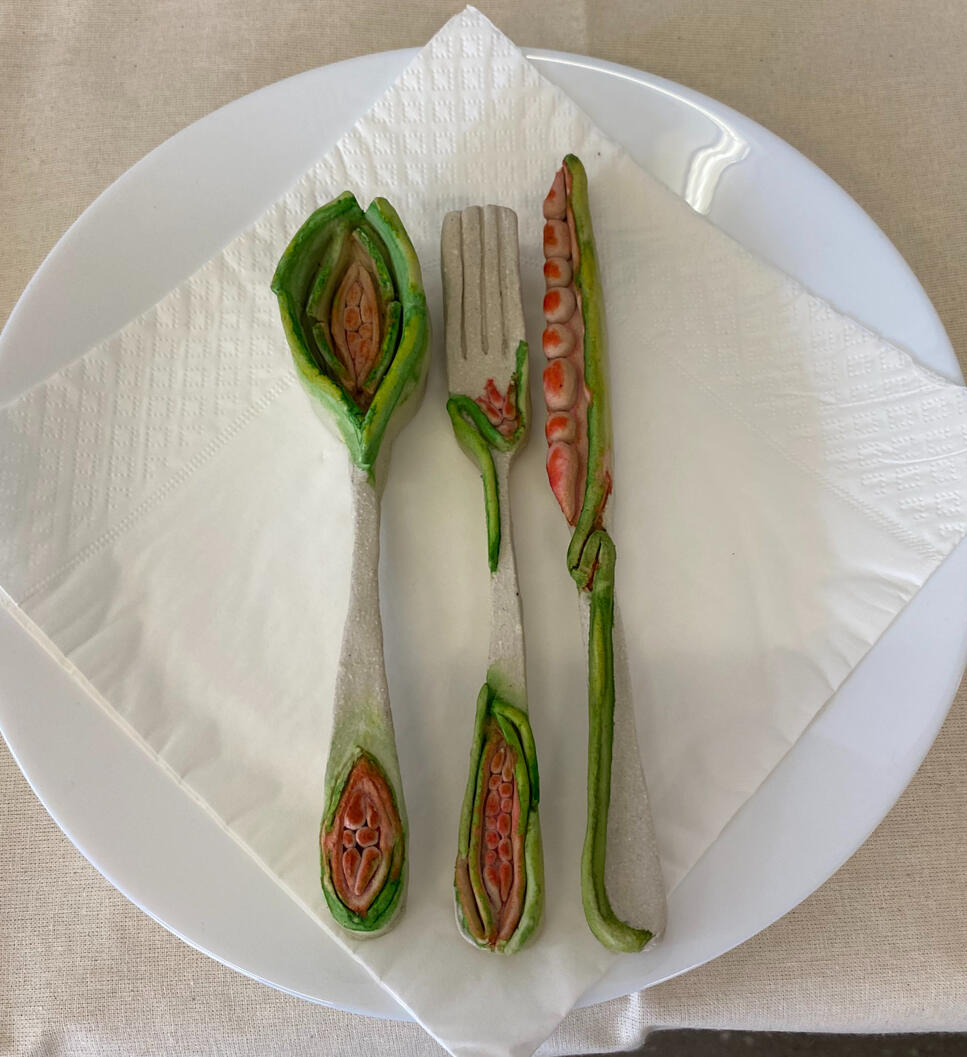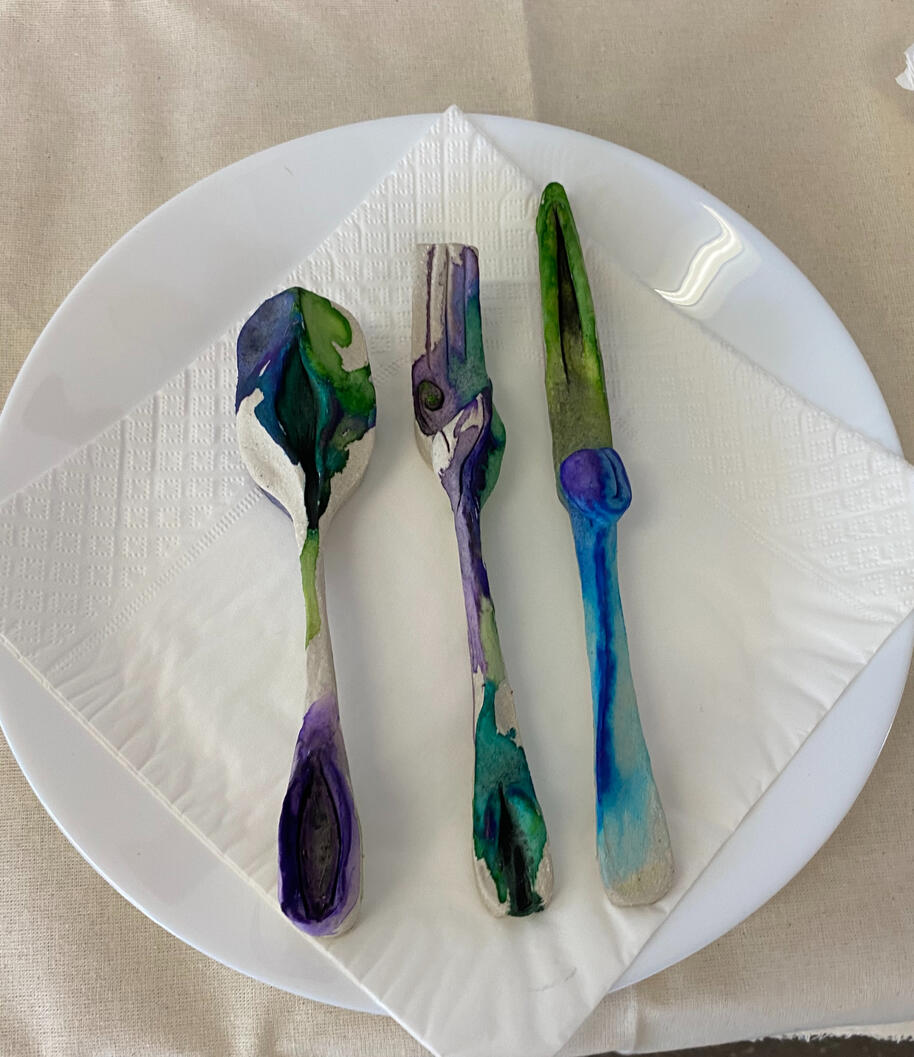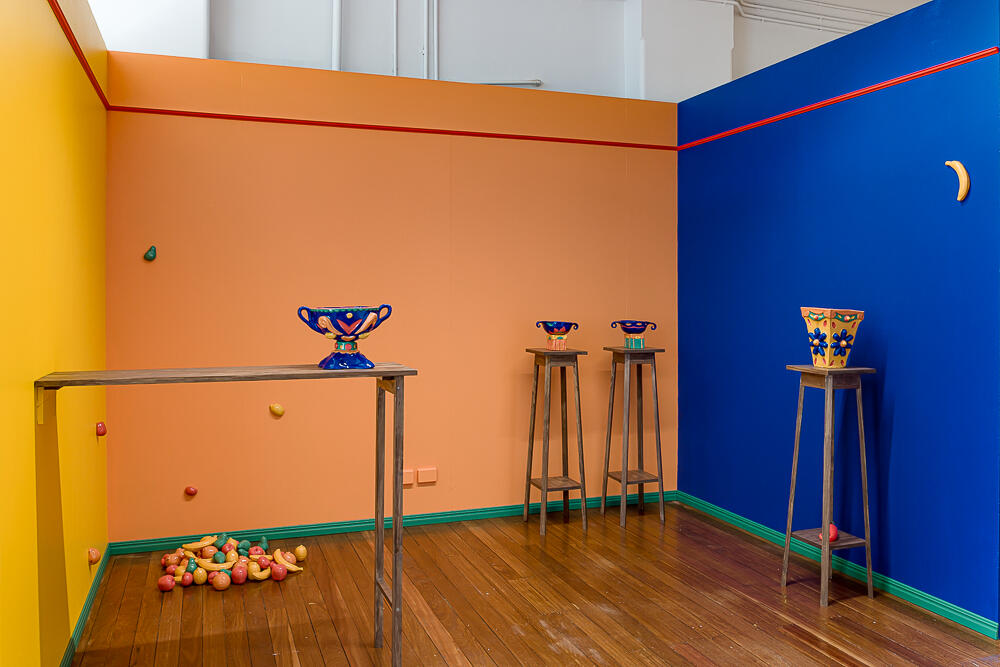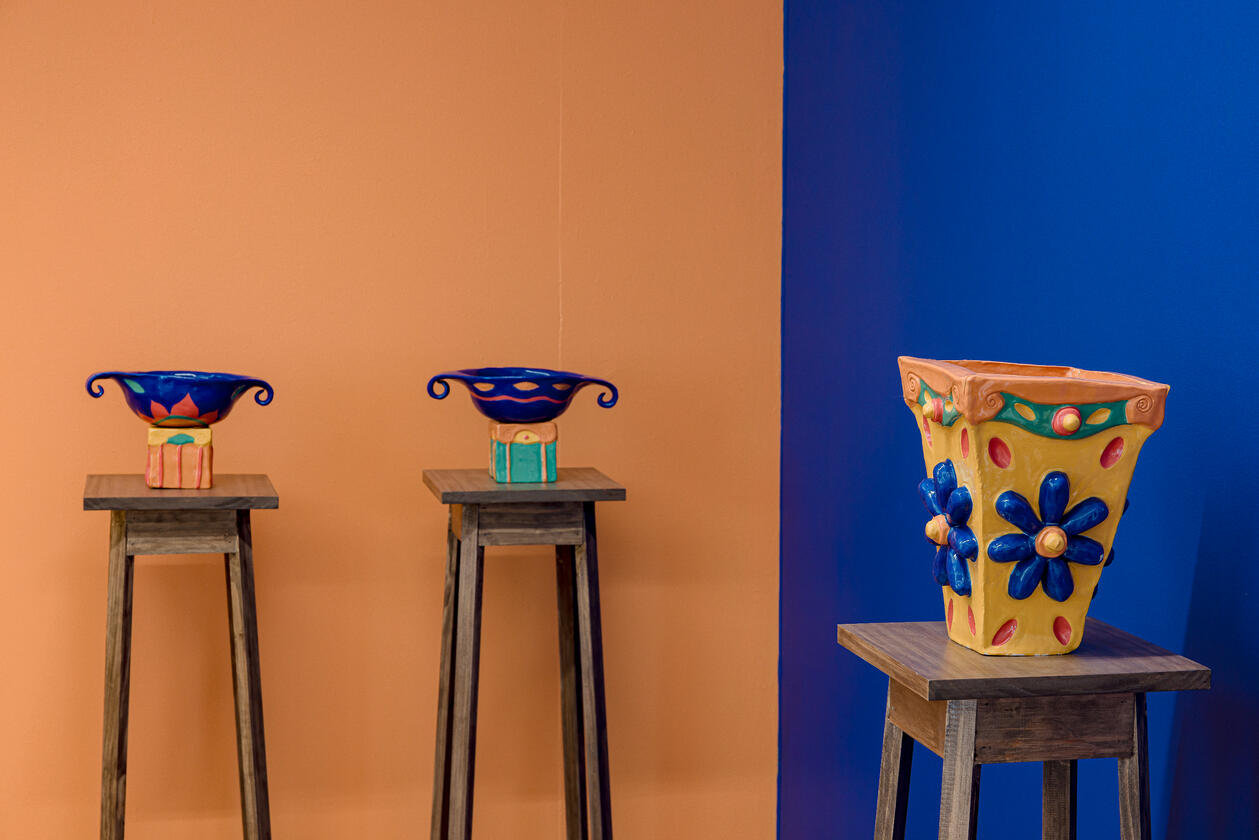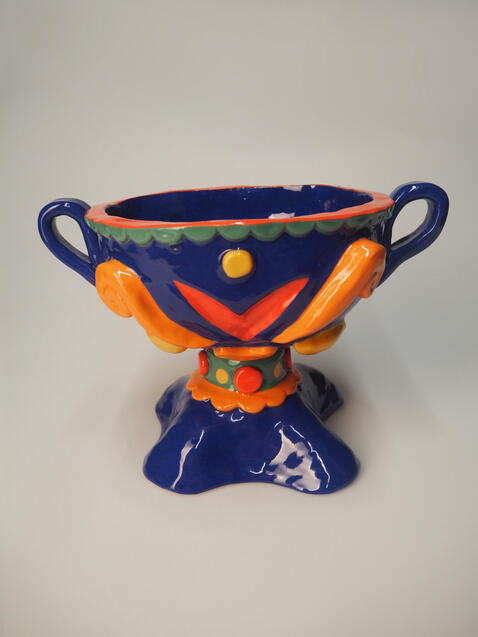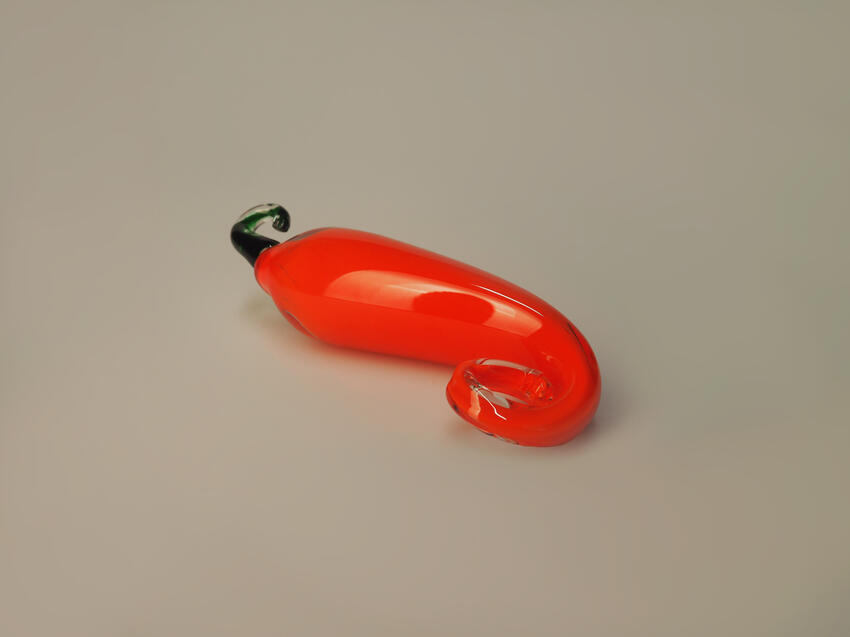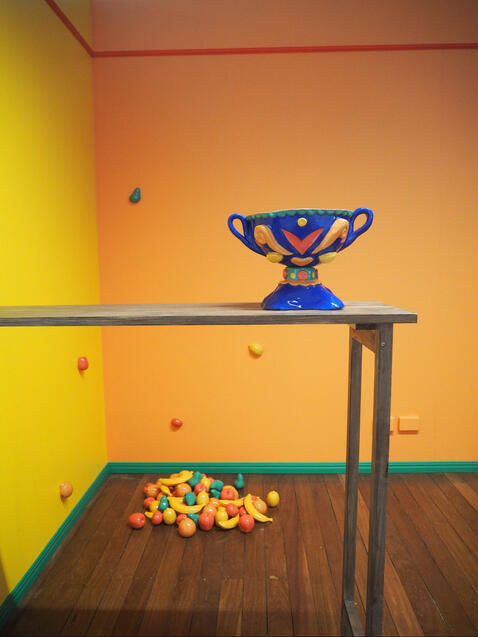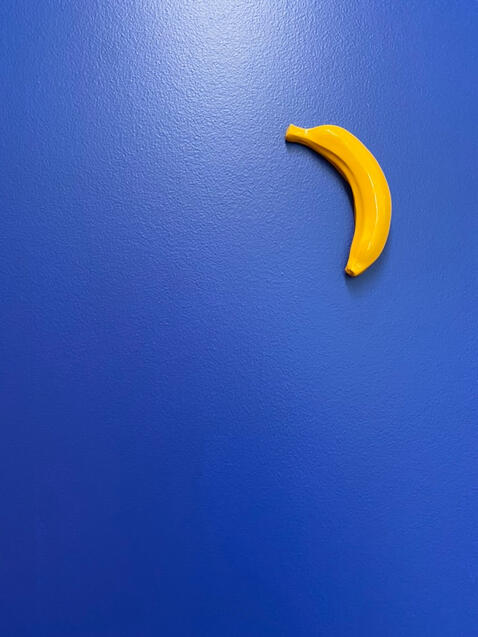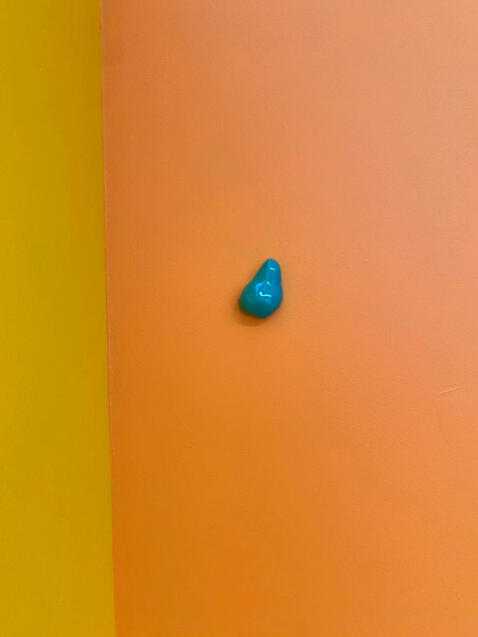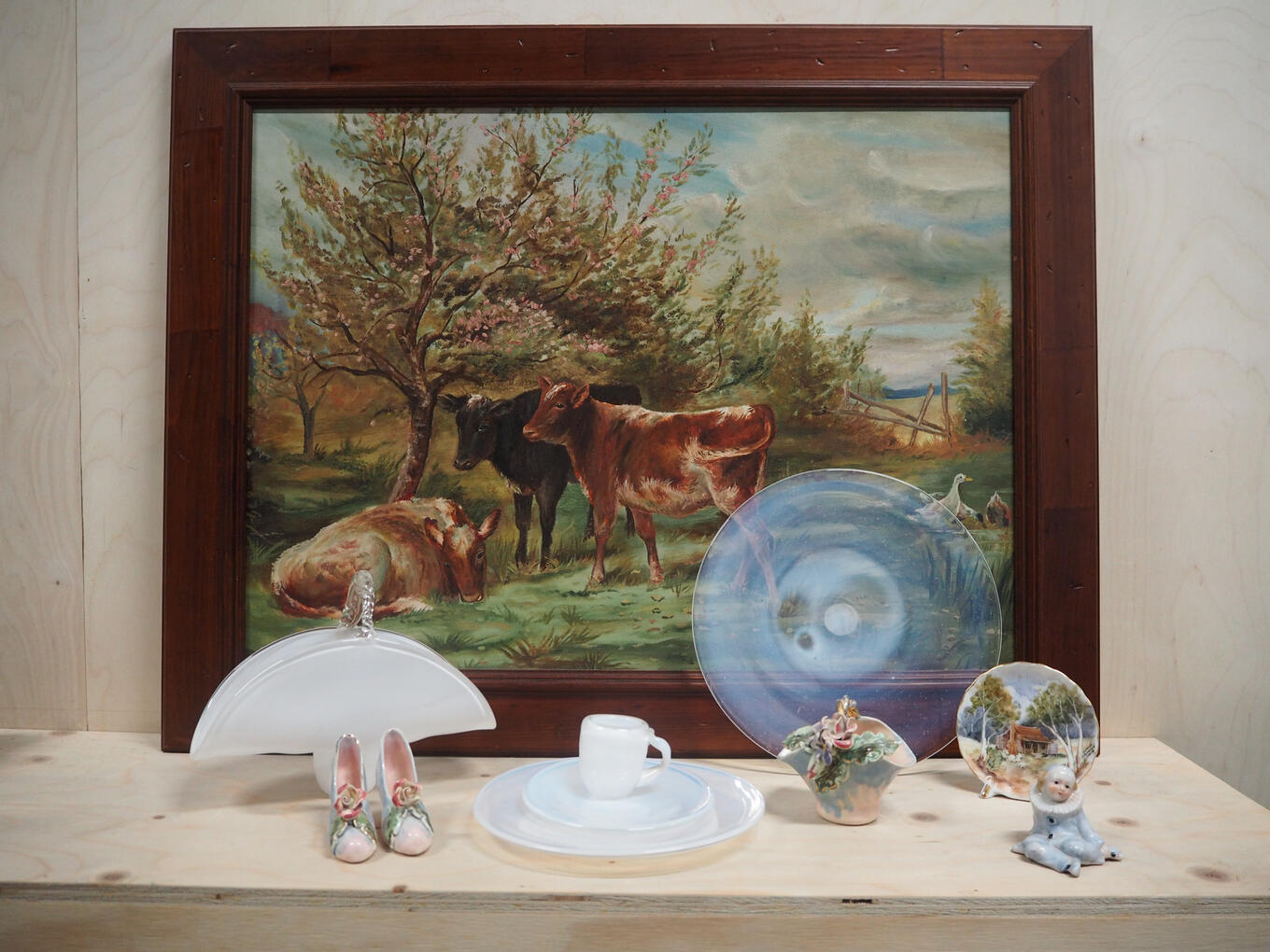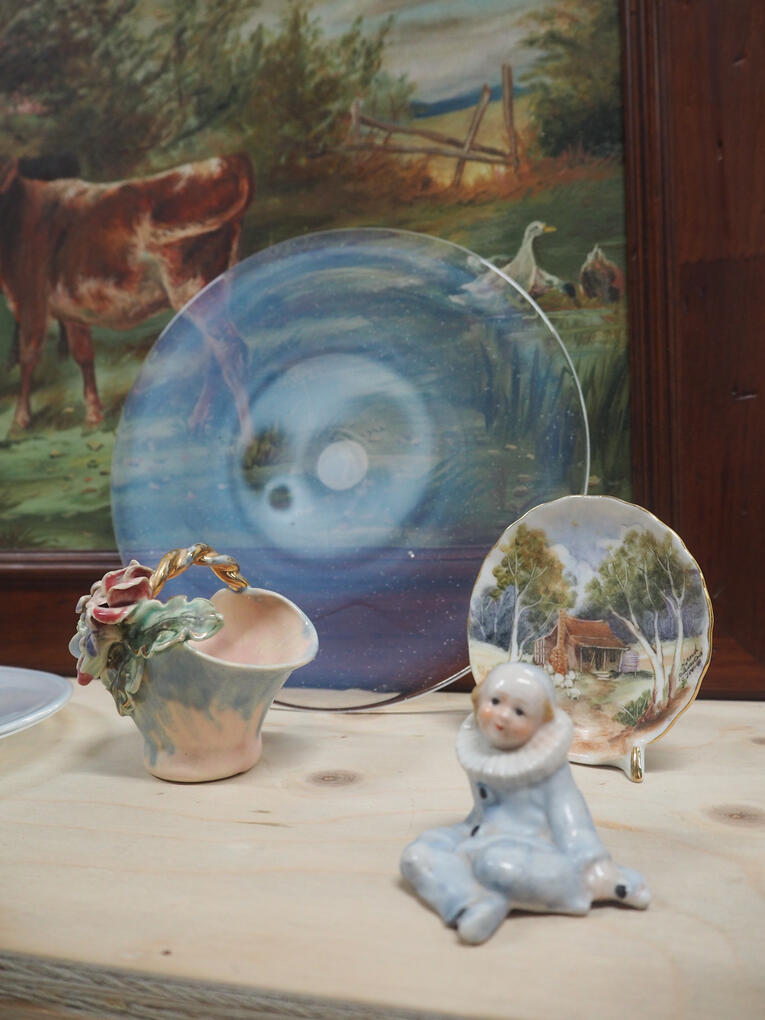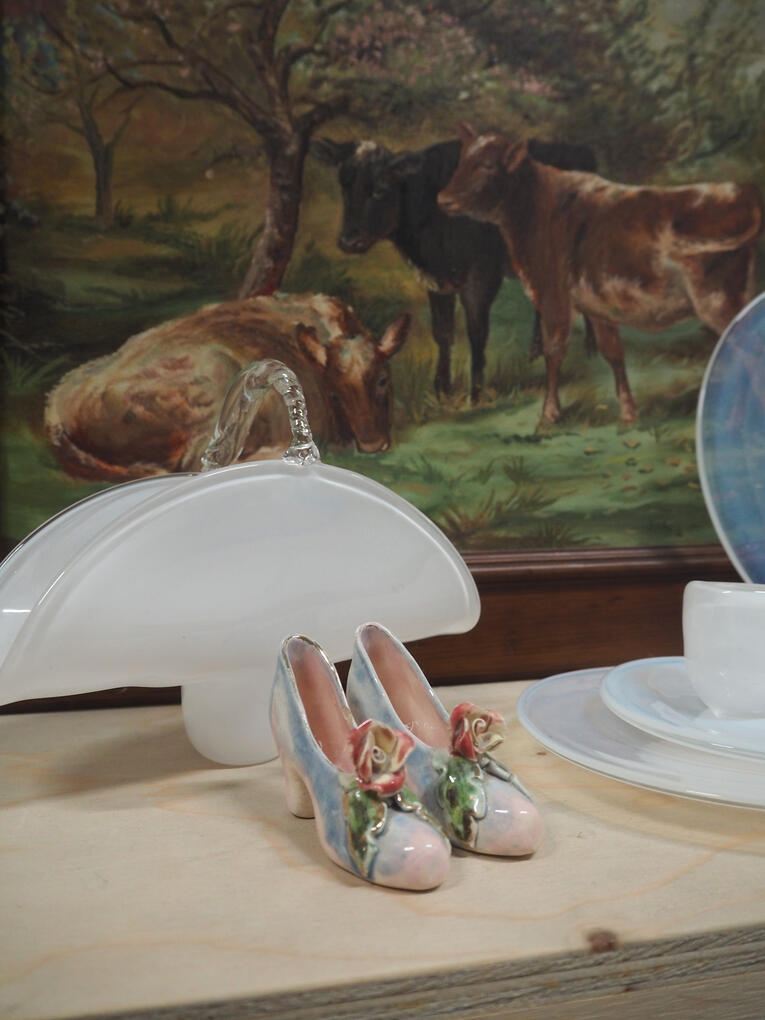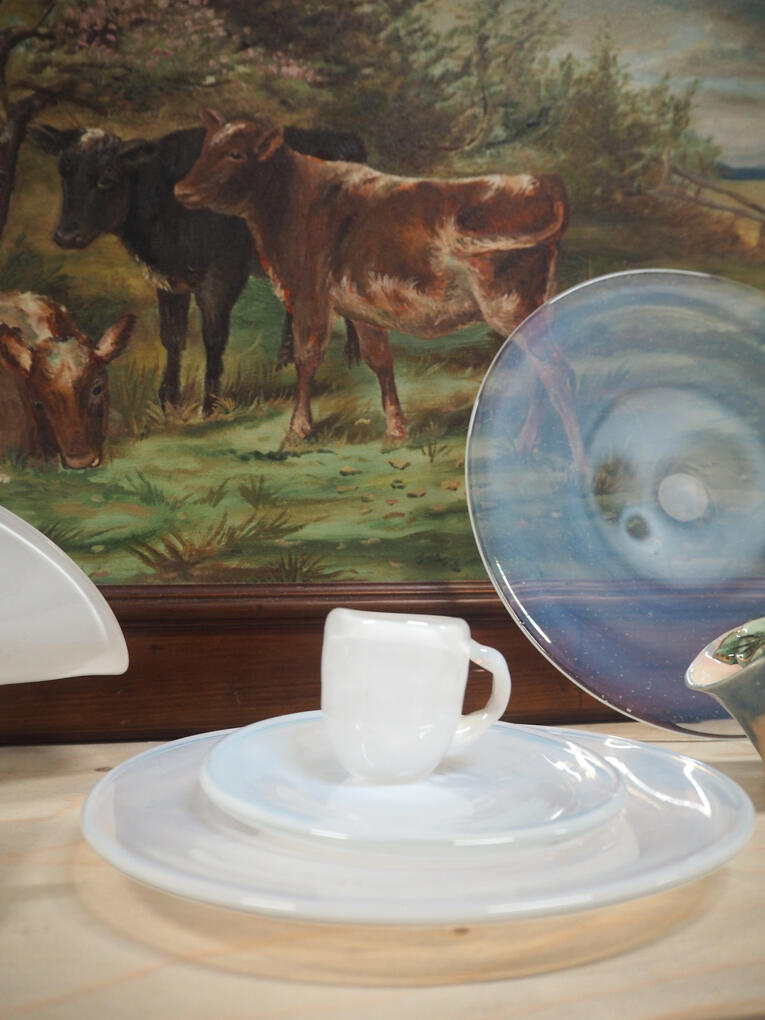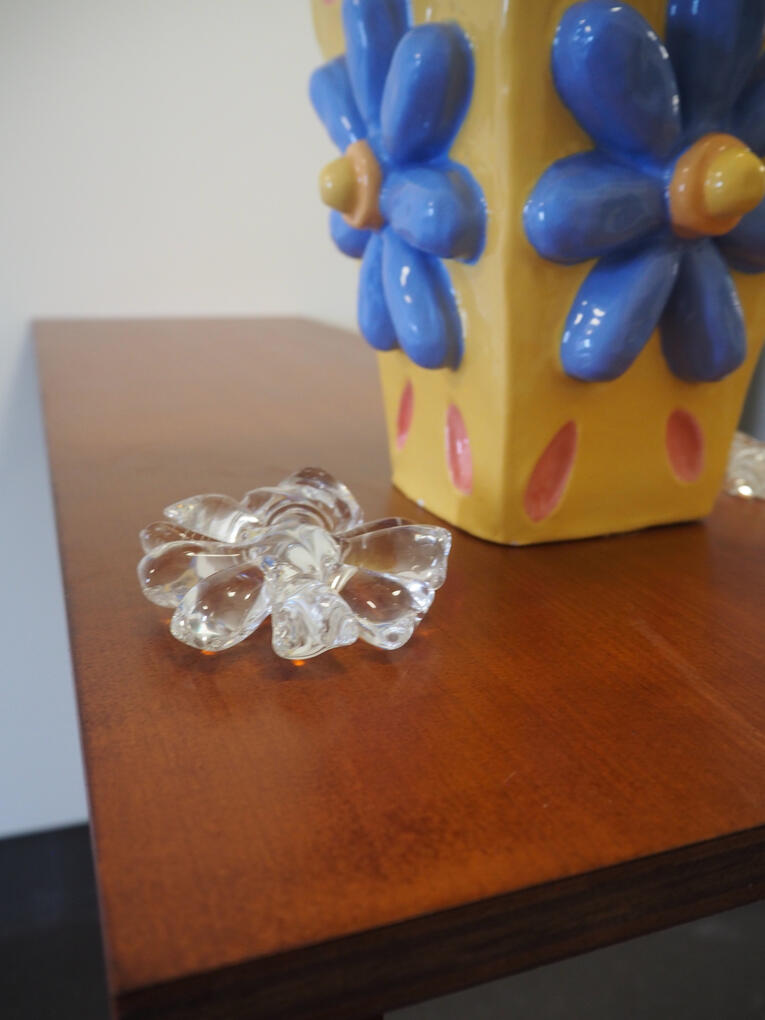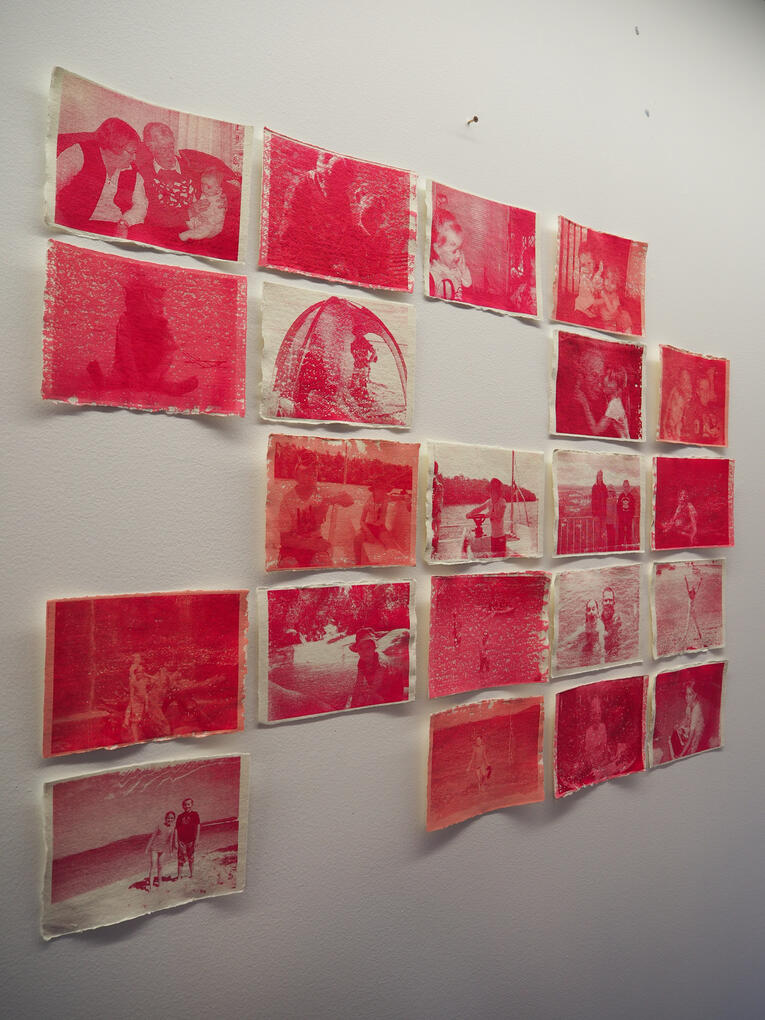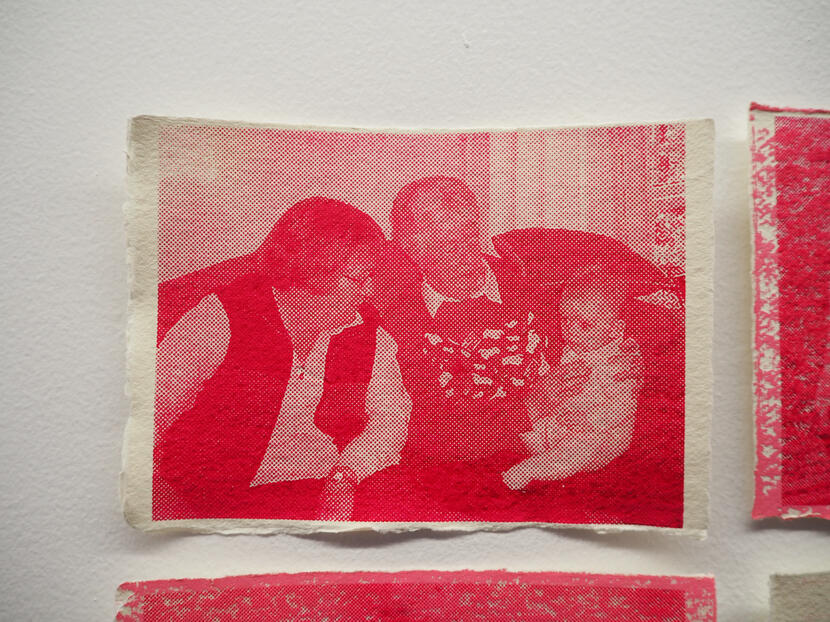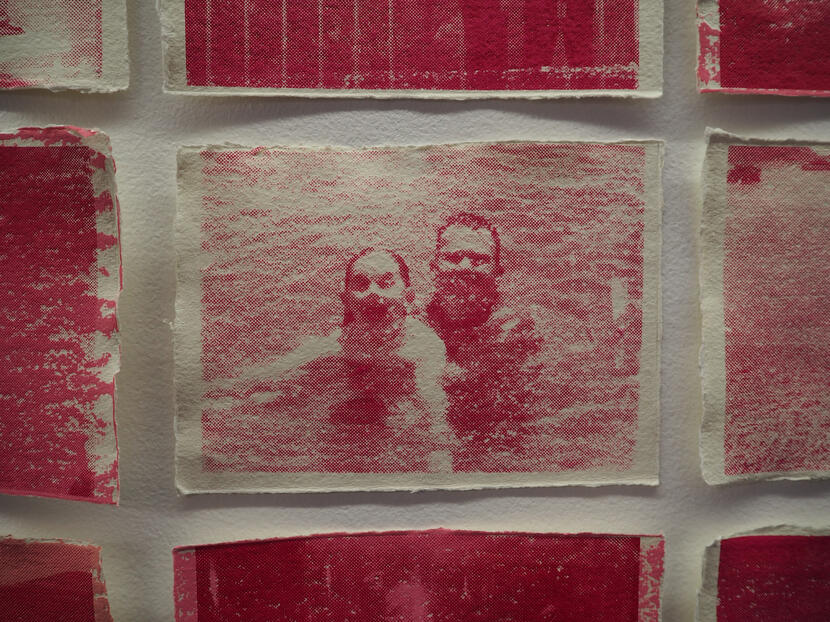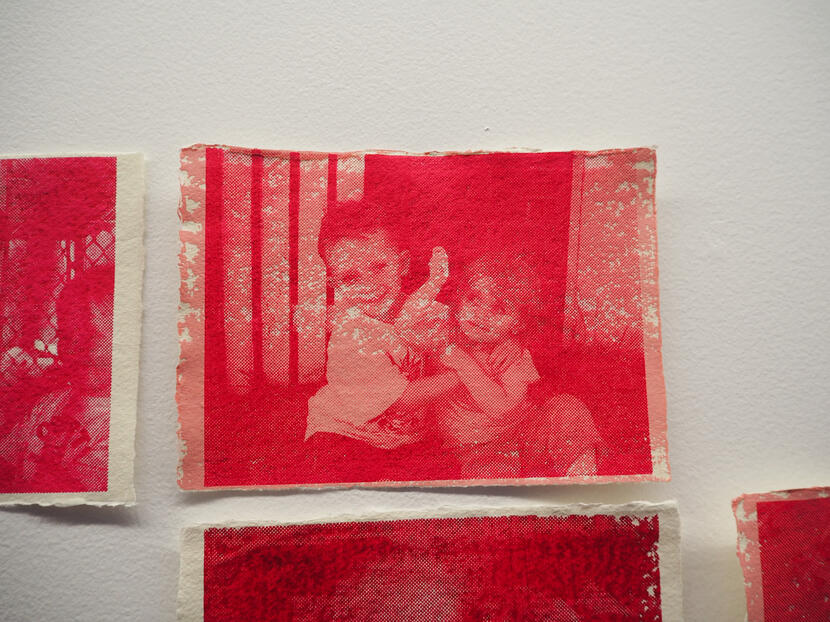Abigail Jarvis Artist Portfolio
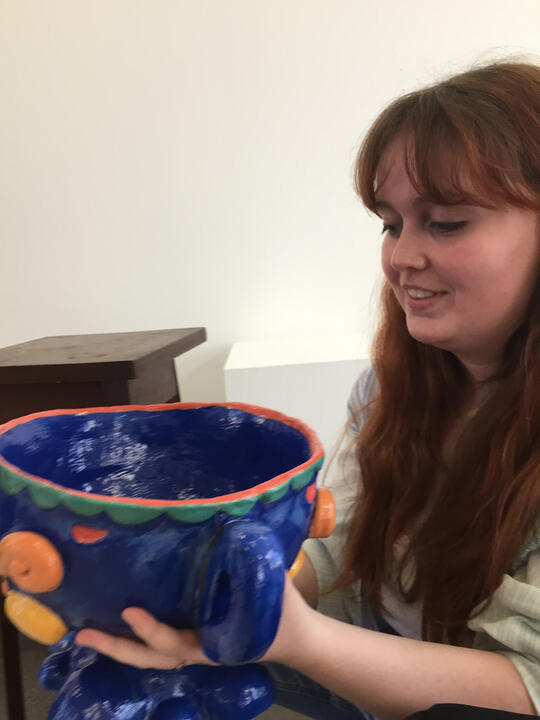
Abigail Jarvis is a Sydney-based Australian artist from the North-West who lives and makes on Dharug and Gadigal land. Abigail utilises various mediums, primarily ceramics, glass and jewellery to explore juxtapositions within the domestic space, queer identity/experiences and beyond.
Anamnesis, a recollection of things past
Anamnesis, a recollection of things past is an assortment of pyrography and pencil drawings that aim to provoke consideration and reflection about life and death through the representation of nature and heritage. The moon and tree represent new life and growth and rabbits symbolise rebirth and resurrection. Anamnesis means a recalling to mind, specifically of a supposed previous existence, which resonates with this work, celebrating life and honouring death through exploring heirlooms and the cycle of rebirth.

(will be re-photogrpahed soon)
Pine, drawing paper, dimensions variable.
Please click on images to enlarge.
untitled (we all need something watching over us)
Displayed in Verge Gallery's Artbox in Fischer Library, 2022
Displayed in Verge Gallery as part of the USU Creative Awards, 2023
a highly versatile artwork adaptable to any space, exploring expanded painting and challenging traditional gallery spaces.untitled (we all need something watching over us) utilises the material qualities of cotton fabric to adapt to its surrounding architecture, depending on how it’s installed within the space. A distinct line between the blue and untouched calico creates a sense of separation between the representation of a blue sky and the draped fabric. The changed physical quality of the fabric from the acrylic paint creates a sense of tension on the fabric's surface. untitled (we all need something watching over us) abstractly and minimally represents various landscapes depending on audience interpretation.
calico, acrylic paint. string, steel (depending on installation). 221x 90 cm.
Seeing Red
Exploring the use of colour in spacial interventions. In each work, the colour red invades the space. The projection eventually leaves the room in a red glow, and the string on the floor prevents the audience from entering.
Red string, Ilford Fine Art Smooth paper, projector. Dimensions variable.
Mother, Mother, Daughter, Daughter
Mother, Mother, Daughter, Daughter is a series of 4 images, each depicting the hands of a woman in my family. This work explores motherhood and the female experience through the depiction of hands belonging to my grandmother, aunt, mother and me. Mother, Mother, Daughter, Daughter highlights hands as a window into our life experiences being born women, and the knowledge gained not only through years of your own experiences but those of the women who come before.
Digital photo. 59.8 x 42.2 cm each.
Women are born with pain built-in
Women are born with pain built-in is a black and white printed photo installation extension of Mother, Mother, Daughter, Daughter. The work references aspects of women’s history, specifically unpaid and undocumented labour within the textile industry, using colour to highlight the anger women of today are left in the wake of this past (and often lingering) prejudice. The audio loop of thread being pulled through paper is representative of the labour-intensive textile process. The audio gives the work a more unsettling aura, contrasting with traditional perceptions of femininity associated with sewing and craft.
Ilford Fine Art Smooth paper, 100% cotton thread and sound piece. Dimensions variable.
Self-Potraits 2022
Please click on images to enlarge.
Untitled
Displayed in Itami Museum of Art and Culture's International Jewellery Exhibition, 2023
Untitled explores wearable objects, contradicting functionality with aesthetics to make a hand adornment that removes mobility and is uncomfortable whilst still looking aesthetically pleasing.
Sterling and nickel silver. Dimensions variable.
Fruitless
Fruitless explores the conventions of the domestic space and traditional gender roles within the home from a queer perspective, playing on visual themes of 'kitsch' and late 80s/early 90s aesthetics. The labour-intensive process of making this work is evocative of the domestic labour undertaken in homes conforming to patriarchal traditions. The work also explores notions of functionality and still-life conventions. Fruitless aims to provoke audiences to consider the heavily gendered space that is the kitchen and the housewife values of being presentable but still holding a purpose.
Fine stoneware, found object plinth. Dimensions variable.
Fruitful
Displayed in Verge Gallery as a finalist for the USU Creative Awards, 2024
Fruitful is a partner artwork to my previous artwork Fruitless. Fruitful is an overwhelming pile of ceramic slip-casted fruit spilling over a wooden ‘plinth’, evoking notions of bountifulness and growth. Both Fruitless and Fruitful are focused on themes surrounding the domestic space, gendered labour and queer perspectives through these conventions. Inspired by second-wave feminism and craft movements, Fruitful utilises traditional still-life imagery to convey meaning. Similar to how Fruitless was an incredibly laborious process to undertake, the quantity of fruit required and the level of dedication and repetition mirrors gendered, domestic labour efforts undertaken within the home.
Earthenware slip casting, found object plinth. Dimensions variable.
Laraium
Lararium is an artwork that first and foremost pays homage to the Greco-Roman household shrines, which were often private shrines dedicated to gods (Lares) connected with the home and family. Lararium is a contemporary interpretation of this, showcasing my relationship with religion and worship. Laraium features several wall-mounted candle holders, several ‘trinket’ shrines and found household items to evoke the setting a lararium would typically be observed. The piano legs closing the shrine in are from my great-grandmother’s piano and the bench the pieces are displayed on is a coffee table top. The work is installed close to the ground to evoke a sense of worship; the act of having to lower yourself to view the pieces is reminiscent of getting on your knees to pray. The trinkets included in the shrine are items of personal importance and showcase how I connect to the past and present through my surroundings. Lararium aims to evoke a sense of worship to the mundane and simple things, in the absence of a ‘god’ typically prayed upon.
Fine stoneware, found objects, wax candles. Dimensions variable.
Untitled (The Dinner Dinner Party Party)
Untitled (The Dinner Dinner Party Party) is a riff off of Judy Chicago’s “The Dinner Party”, wherein 39 place settings around a table showcase women from history. My work selects 12 of these women- adding Chicago herself into the mix- to adapt these place settings onto sets of cutlery, inverting Chicago’s work where the plates were the focus and the cutlery blended into the background. The women are mixed together rather than separated on each side of a triangle to put them on level ground with one another, despite their time differences. The title’s main component “Untitled” is a reference to how these women were largely overlooked and “untitled” in their lives, whilst the parentheses (The Dinner Dinner Party Party) comically references Chicago’s work, as this work is intrinsically linked with Chicago’s.
Reclaimed clay, sourced tablecloth, plates and serviettes. Dimensions variable.
Family Unit/y
Family Unit/y explores the ways in which individuals can come together, in this case in reference to dinner tables. Each plate and cup set is representative of an individual in my family, where the colour signifies their personality and preferences, which are then brought together within the marbles; holding moments when all 4 are together and whole. Each set is unique to the individual it represents, with the found glass additions echoing this to further the idea of bringing people together; despite these found objects having previous uses and experiences embedded in them, they now hold another function in bringing my family together.
Glass and found glass. Dimensions variable.
Please click on images to enlarge.
In the Kitsch/en
Displayed as part of Sydney College of the Arts' New Contemporaries Show, 2024
In the Kitsch/en aims to explore queer perspectives of domesticity, particularly grounded in my own experiences of the home and traditional conventions. By creating an immersive, slightly obnoxious environment for the ceramic, glass, and sculptural objects, this work plays on notions of gaudiness and kitsch. This approach confronts the audience with their preconceived notions of home, underpinned by on-the-nose humour. Utilising imagery from my childhood, In the Kitsch/en redefines expectations of the domestic and objects within this space, venturing into the realm of expanded painting. I aim to regain the comfort of domesticity through the reclamation of childhood iconography, with the laborious process of constructing this installation serving as a reflection of gendered domestic labour. Ultimately, In the Kitsch/en invites viewers to reconsider their relationship with domestic spaces, challenging them to find beauty and meaning in the complexities of queer identity and the often-overlooked narratives that shape our understanding of the home.
Ceramics, wood, blown glass, paint, skirting board, crown moulding. Dimensions variable.
Flowering
Flowering explores notions of the domestic space and motivated gift-giving as a form of placation. Flowering looks towards the idea of the nuclear family, wherein the gift of flowers in the early stages would be gifted and received with a great amount of love. Over time, however, the gift of flowers within this structured, heteronormative scenario becomes almost chore-like and less an act of love. Flowers go from being a badge of honour and become an expected part of the routine. Instead of preserving the glass flowers in their fresh and perfect stages of life, I’ve chosen to preserve the flowers as wilted, dying and falling apart. This is to mirror the decay of the proposed relationship above. The vase continues to draw inspiration from the set of tiles displayed in my childhood home, with some details changed and exaggerated to create a large, obnoxious and almost comically oversized vase for the flowers. The table the piece is displayed on was made using a reclaimed benchtop from within the Old Teachers College building which was saved during renovation. The tabletop was re-stained and the legs were made to create the image of a strange-looking furniture-like plinth that looks out of place against a white gallery wall. The intention behind the construction of the table is to create the appearance that the table has randomly appeared within the gallery, with the back half stuck in the wall. All these individual elements come together to form Flowering, whose title reflects notions of fertility and childbearing. Flowering is another work in a series focusing on the complexities of the domestic space and its connotations.
Glass, fine white stoneware, found wood. Dimesnions variable.
XXI
XXI reflects my childhood, memory and nostalgia as I approach my 21st birthday. Memory, especially of my childhood years, has always been something I struggled with. As I approach my 21st, I consider my younger self as almost an ‘other’; something separate to me. I’ve come to rely on childhood images as a point of connection to that version of myself. I chose to screen print on handmade paper as this texture creates differences in each print which, combined with the larger half-tone size, creates a warped, slightly unclear effect on most of the images in the work. I chose to work with tones of pink as that was my favourite colour as a child, and I feel a great sense of nostalgia when thinking about my pink-tinged childhood bedroom. XXI’almost acts as a birthday gift to myself, the process of printing took a lot of learning and patience, and that feels reminiscent of my attitude towards my younger self.
Acrylic screen print ink on Khadi paper. 740 x 1050 mm.
My Father Before Me, His Mother Before Him

My father before me, his mother before him is a print of my father and his mother- my grandmother; commemorating her recent passing. The colours used are featured in the family crests on my father’s side of the family.
Acrylic screenprinting ink, paper.
Incoming
